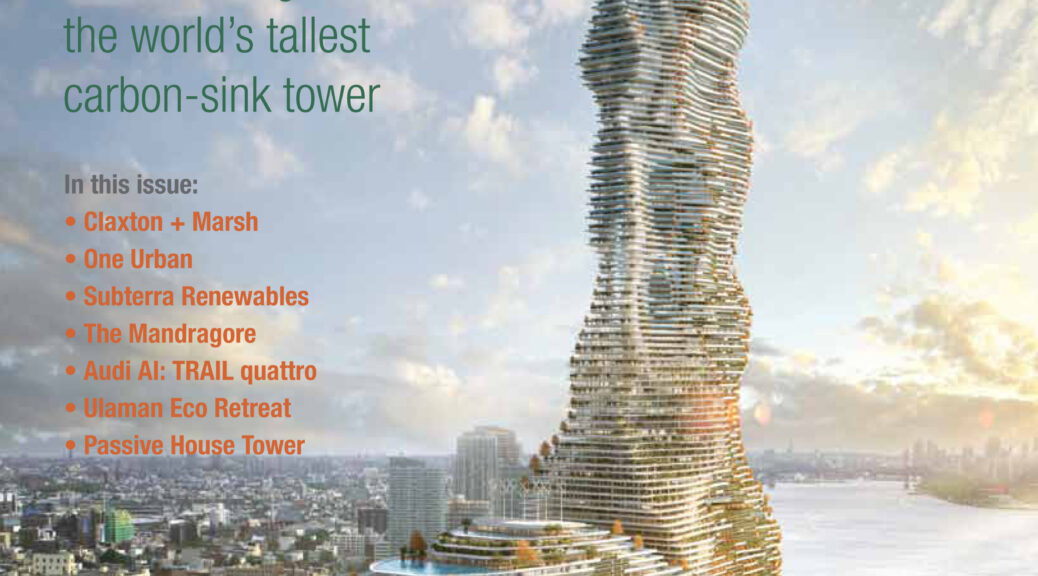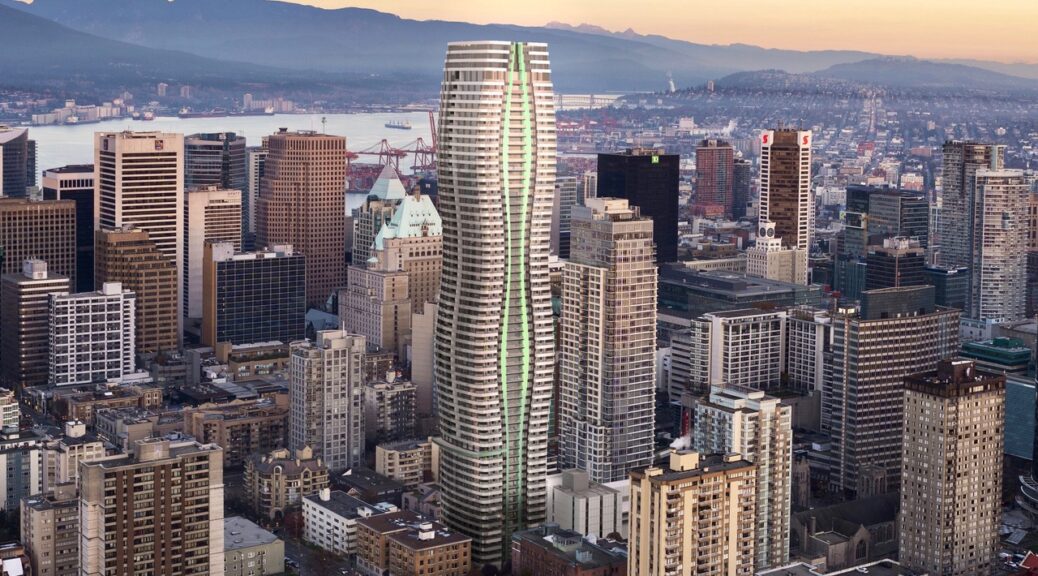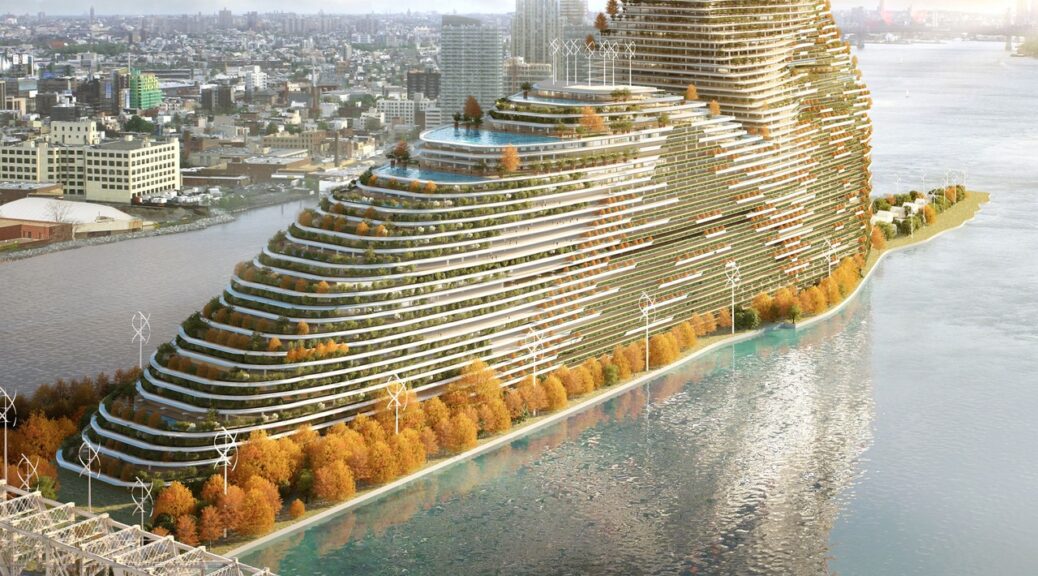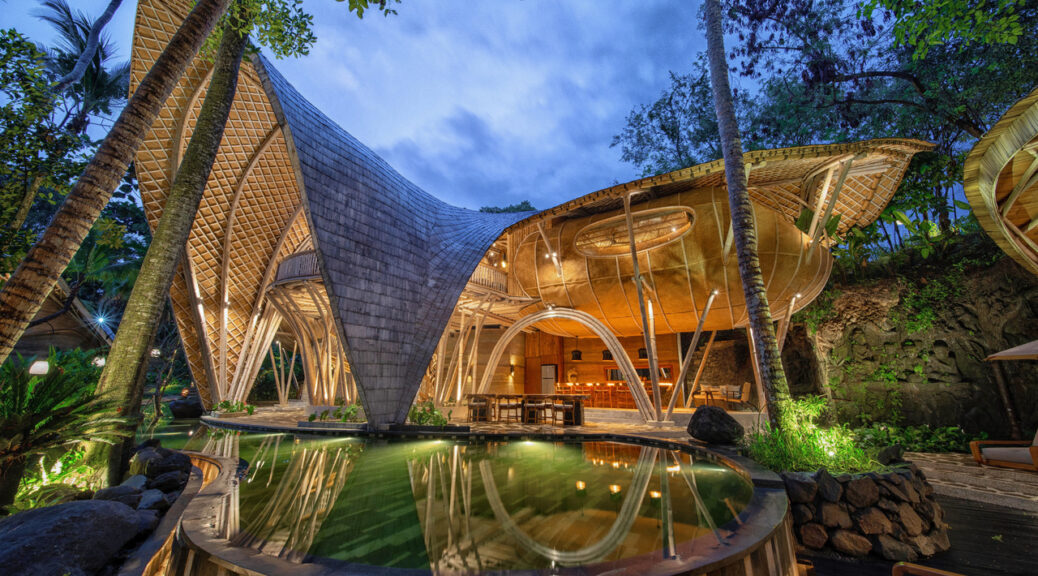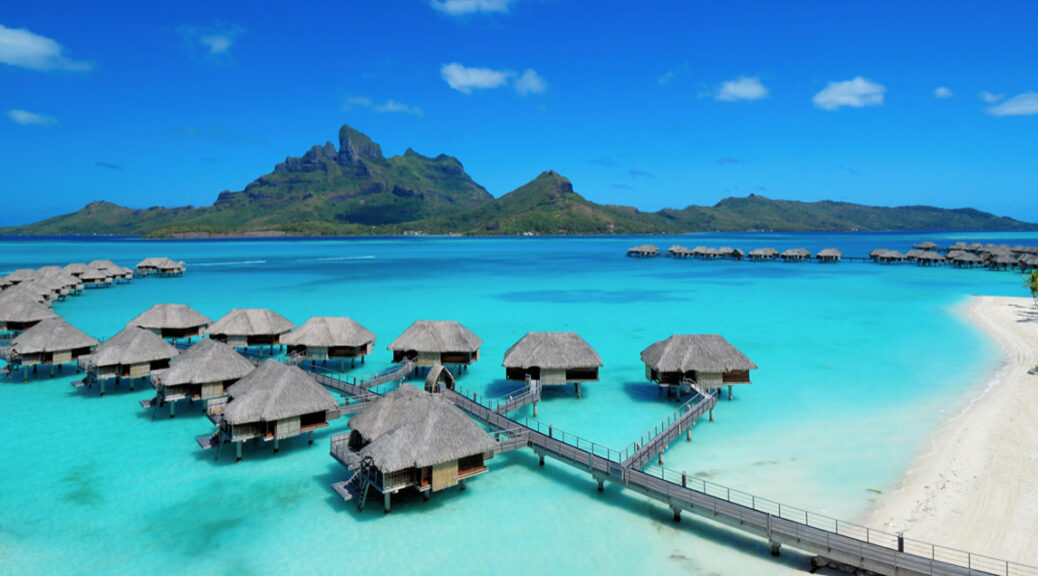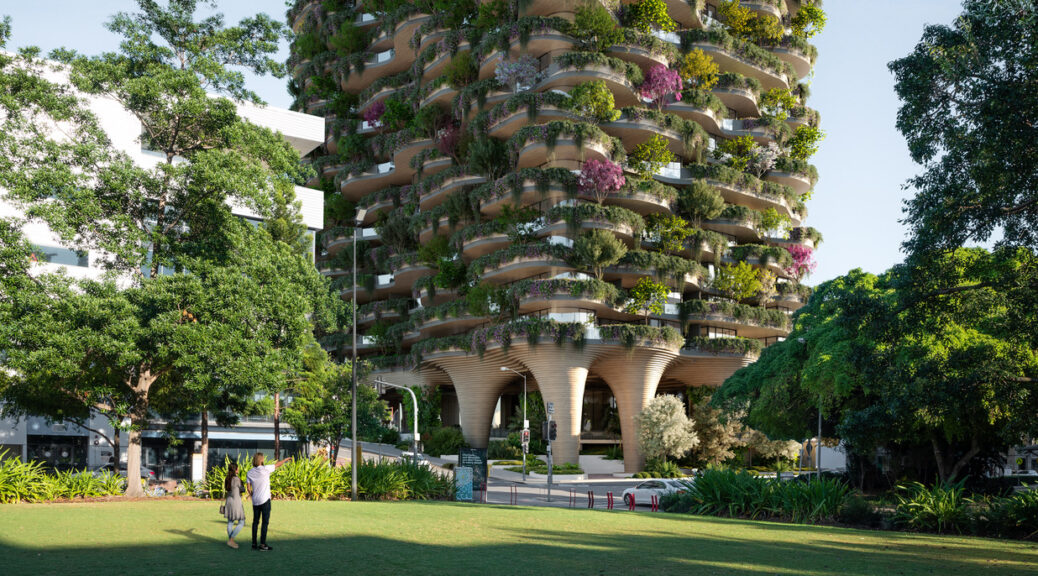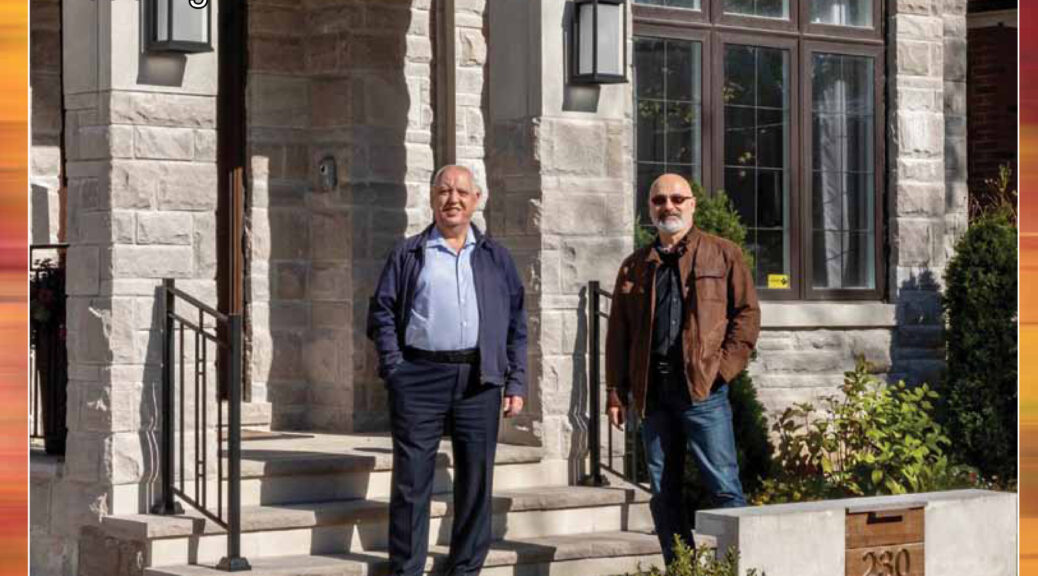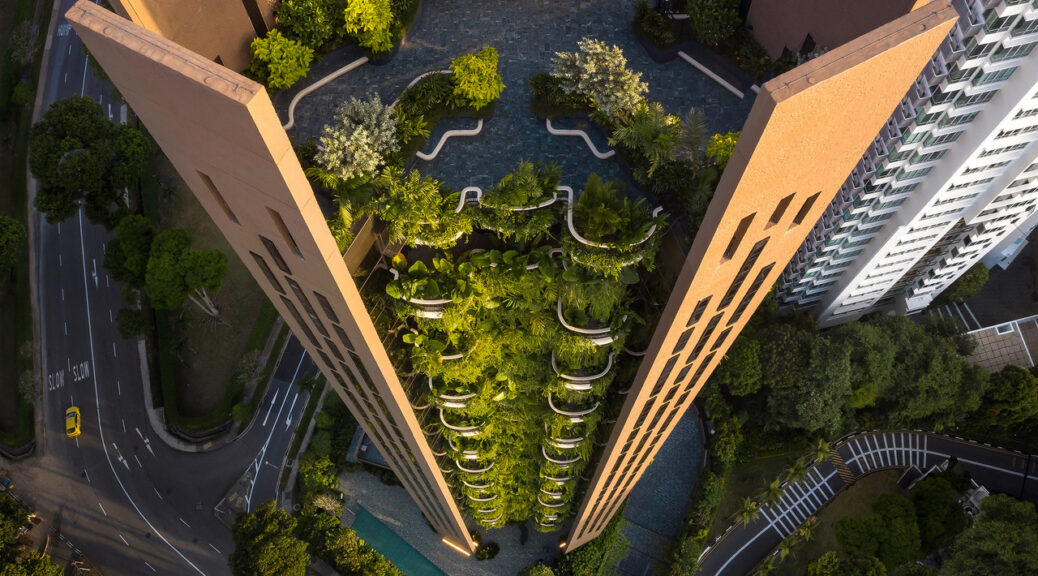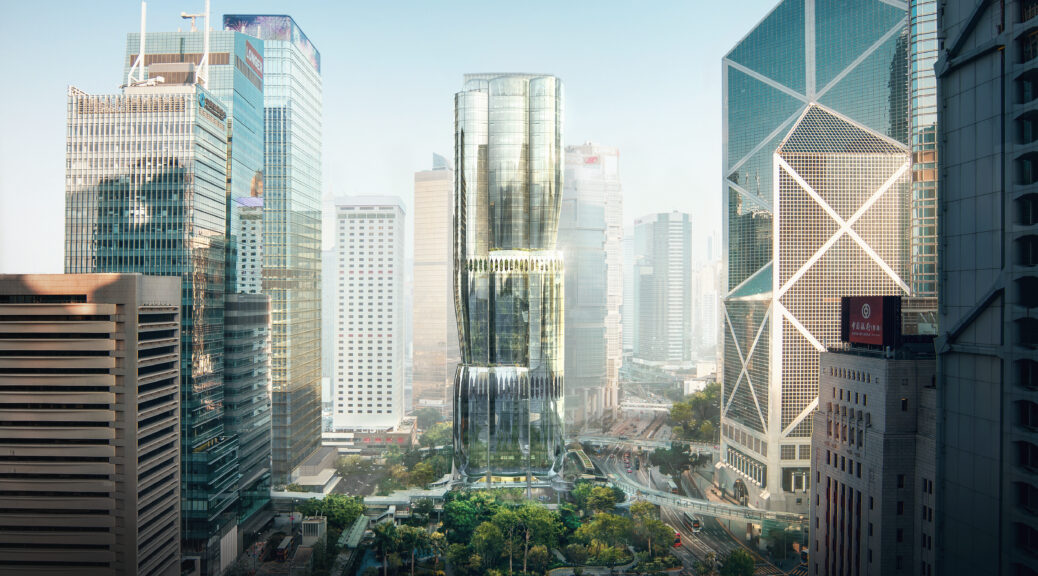All posts by Giulio
World’s Tallest Passive House Skyscraper to be built in Vancouver
Canadian company Henson Developments is planning a 586-ft-tall, 60-storey, mixed-use residential tower in downtown Vancouver’s West End. It will become the tallest Passive House green building in the world.
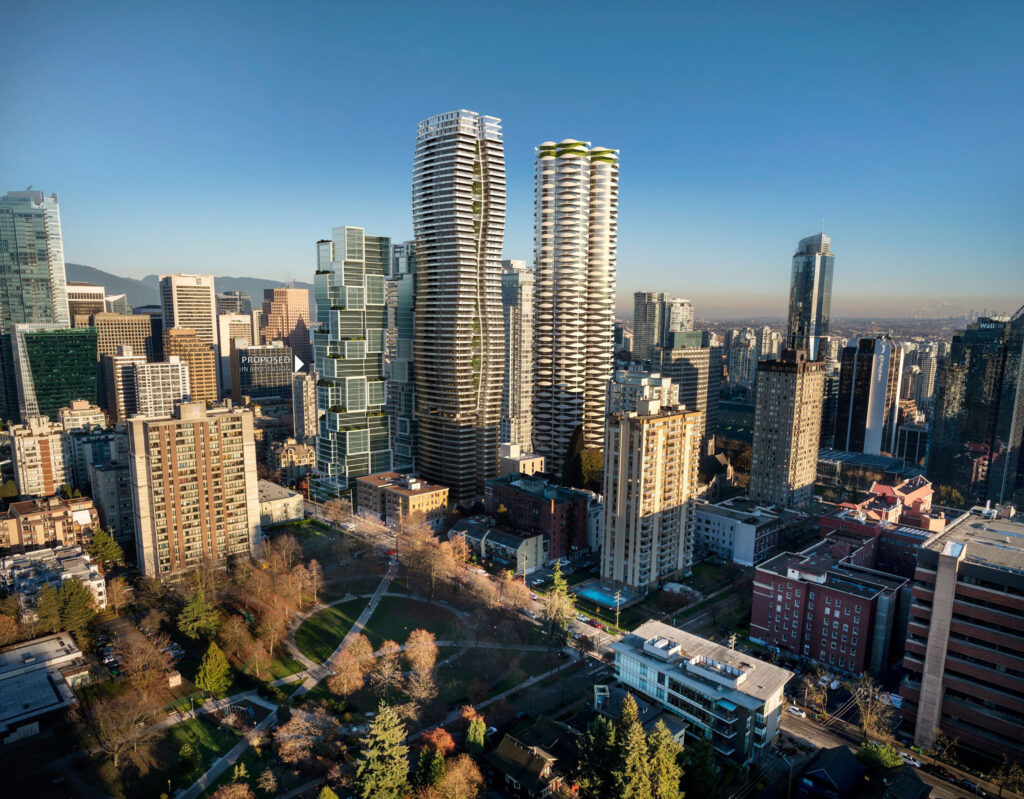
Tom Wright of UK-based WKK Architects, which is best known for its work on Dubai’s Burj Al Arab, designed the tower, while IBI Group is the Vancouver-based executive architect.
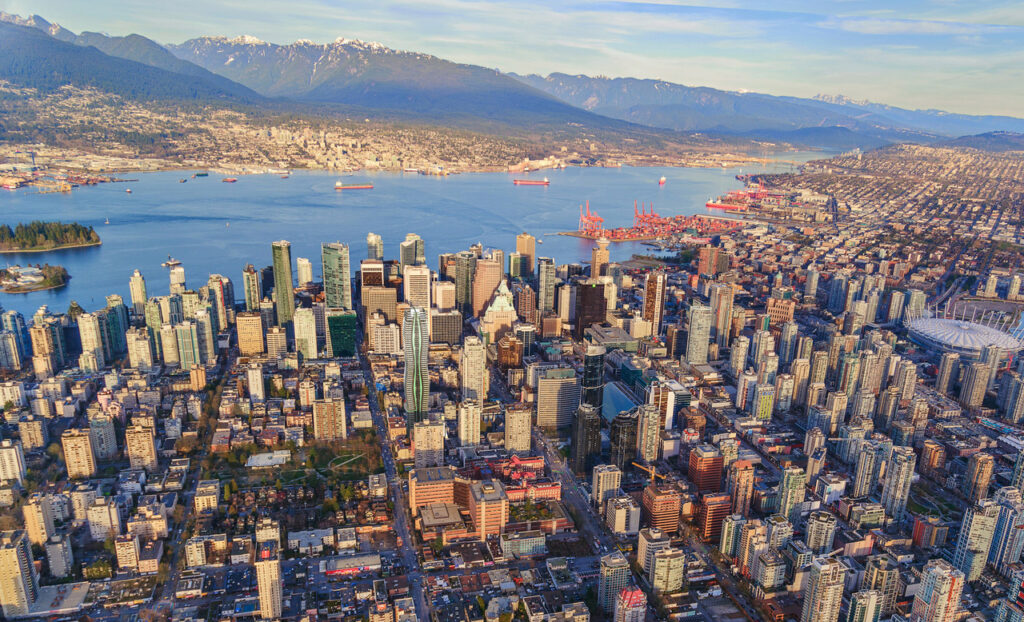
In order to achieve stringent Passive House standards, targeting a final energy consumption rate that is 80 per cent lower than those built with standard construction methods, the architect chose a more efficient mechanical systems, including two very large heat recovery ventilation units as a centralized system, which is unique for a building of its size and has never been done before.

The tower’s envelope will be more airtight and better insulated, with more efficient triple paned windows with special energy-saving window coating. This way, the heating and cooling system only needs low capacity as variances are minor so the building doesn’t need the traditional cooling towers, chillers or furnaces/boilers, consequently reducing the expenditure on both the heating/cooling infrastructure and significantly reducing energy costs for residents and the buildings operators – as well as total carbon emissions in future years.
Photos courtesy of Henson Developments
RESCUBIKA CREATIONS: Mandragore – the world’s tallest carbon-sink tower
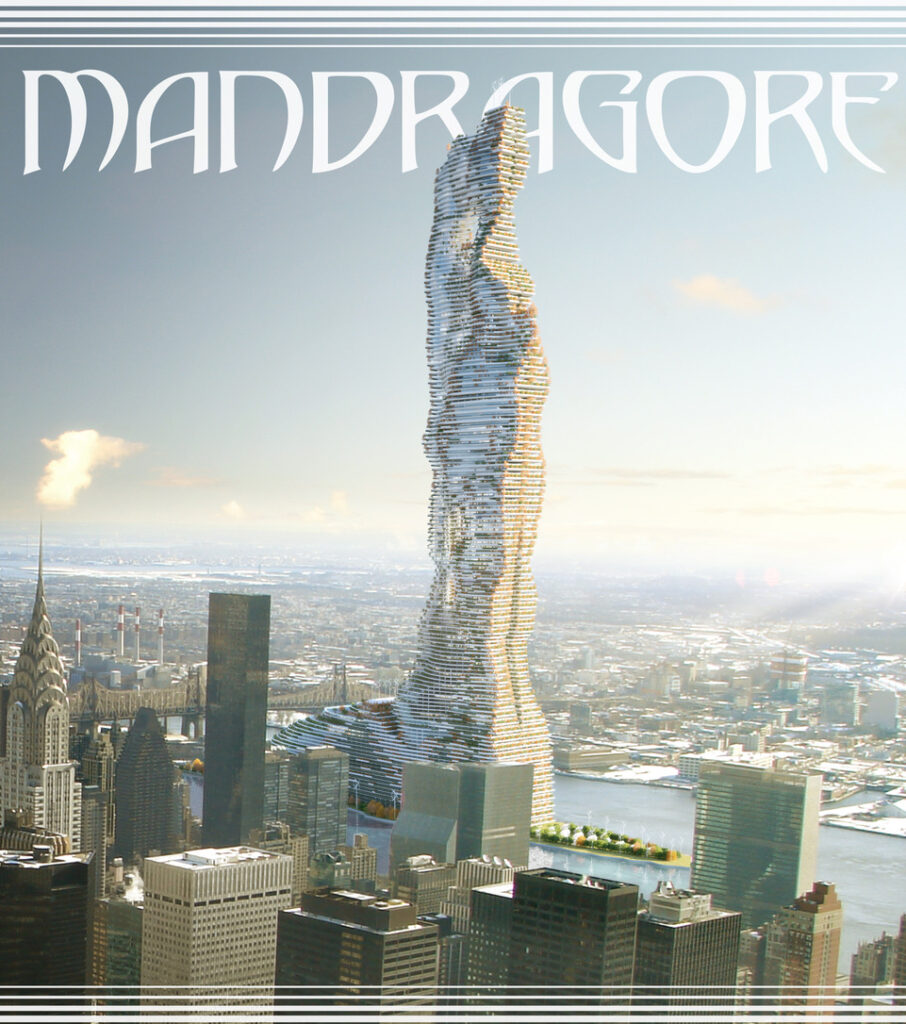
Futuristic carbon negative residential tower proposed for New York City’s Roosevelt Island
Mandragore is a proposal to add substance to carbon neutral architecture. Like its namesake the mystical mandrake plant it takes our imagination to new realms, where fresh dimensions wait for us to explore. And explore them we must for the sake of all our futures.
However, New Yorkers are unlikely to accept a 2,418 foot-tall tower on their beloved Roosevelt Island, and lose a precious piece of parkland in return. But that matters not. What matters is that Mandragore is a beacon on the road that human architecture must follow.
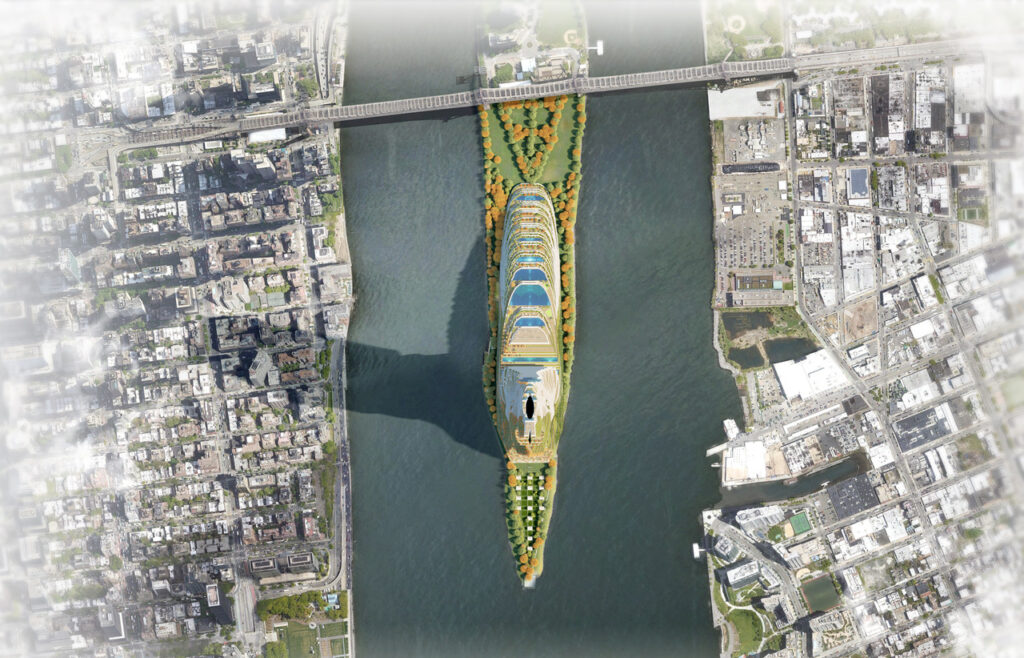
Not only is it designed to be the tallest tower in the world, Mandragore also ambitiously aims to becarbon negative—meaning it will eat up more carbon than it produces.
The project is a response to the ‘city of tomorrow’, a city that will consider its carbon footprint and achieve carbon neutrality by 2050.
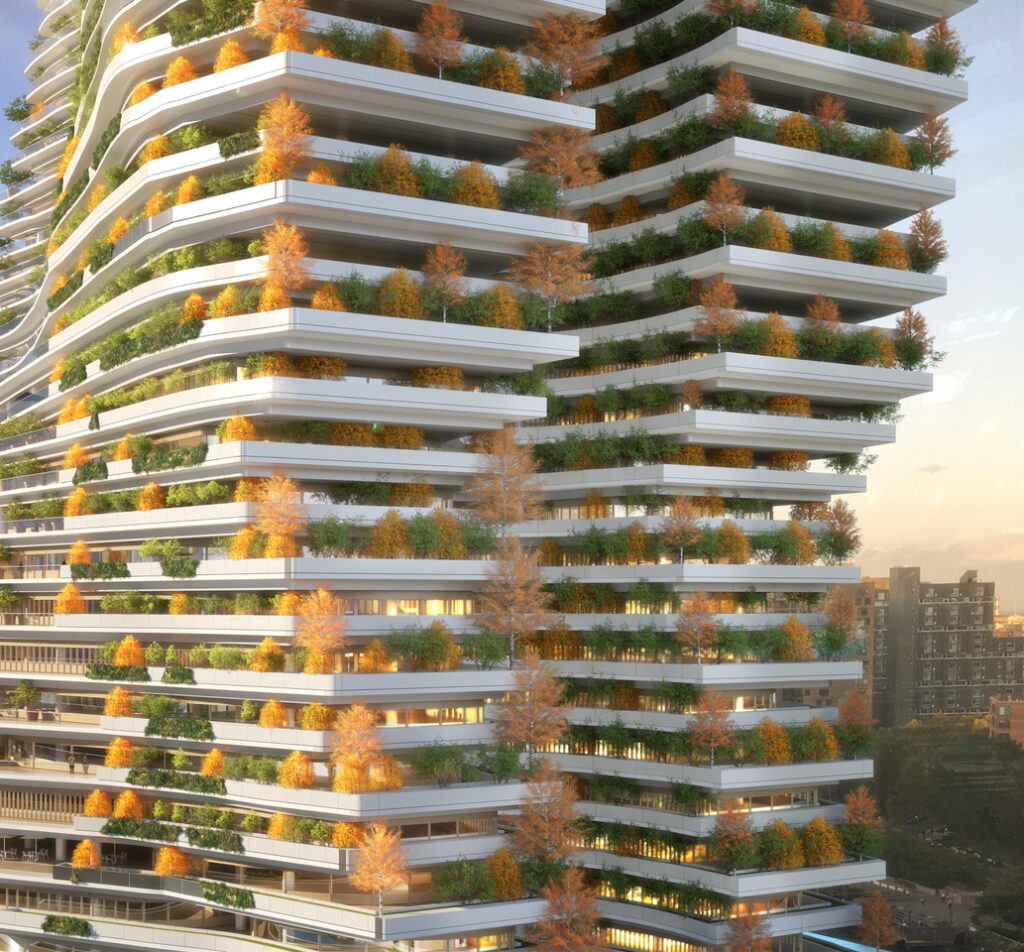
Conventional buildings create carbon emissions that trap their heat in the atmosphere. It’s a vicious energy circle that Mandragore wants to break. But this is not the product of a fevered imagination. The bits are already there. Mandragore simply puts them together in a form we can engage with, and understand.
This project thinks outside the box of sustainable architecture. Besides achieving the technical or quantifiable goals related to carbon and energy usage, the project also executes a concept called “energy sobriety,” which calls for a shift in lifestyle choices resulting in a smaller carbon footprint
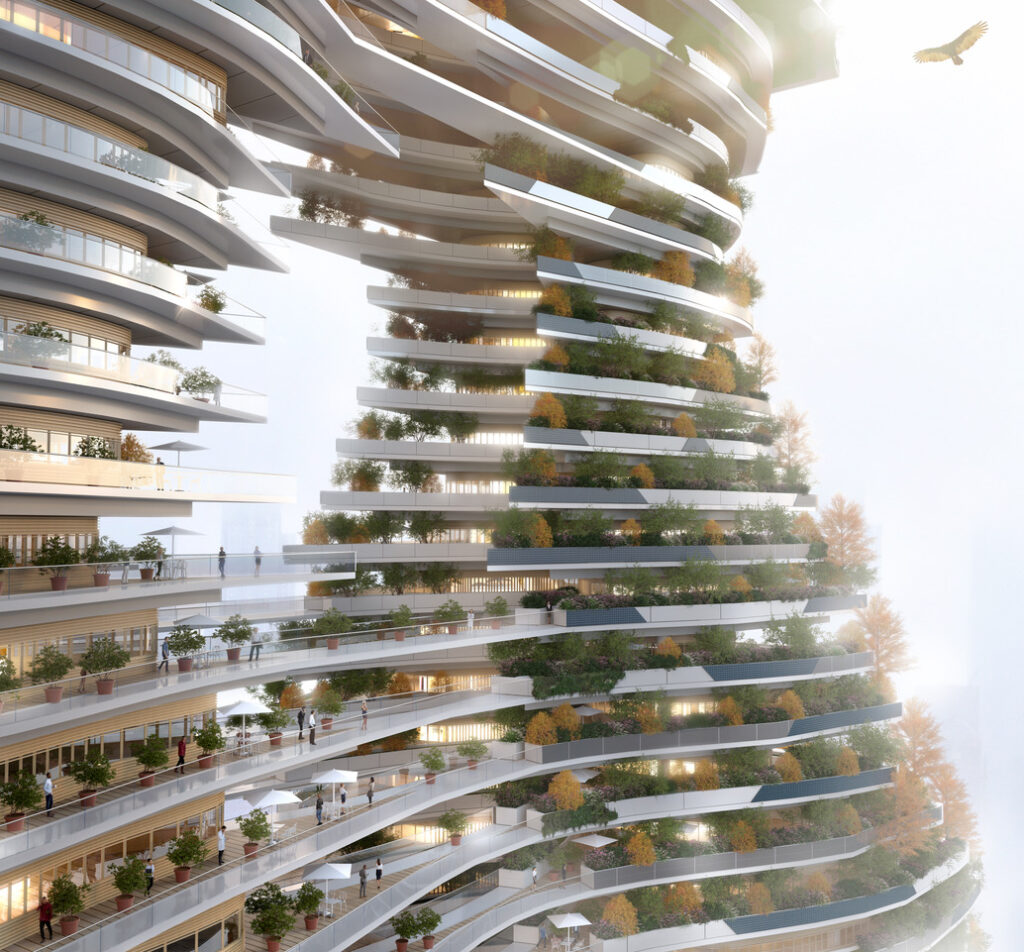
The sinuous structure with many curves and turns would absorb more CO2 than it creates, by becoming a carbon sink. It would warm and cool itself through a network of passive underground pipes, enabling air-ground thermal exchanges. While a cladding of living plants would convert CO2 in the air above New York to oxygen.
Humankind’s obsession with technology has taken us on an energy shopping spree, leading us in a direction perhaps even threatening our extinction. Mandragore could be a living expression of energy sobriety, which appears to be the only way to survive. We simply must reduce our overall consumption. Does it matter if our buildings have a different appearance?
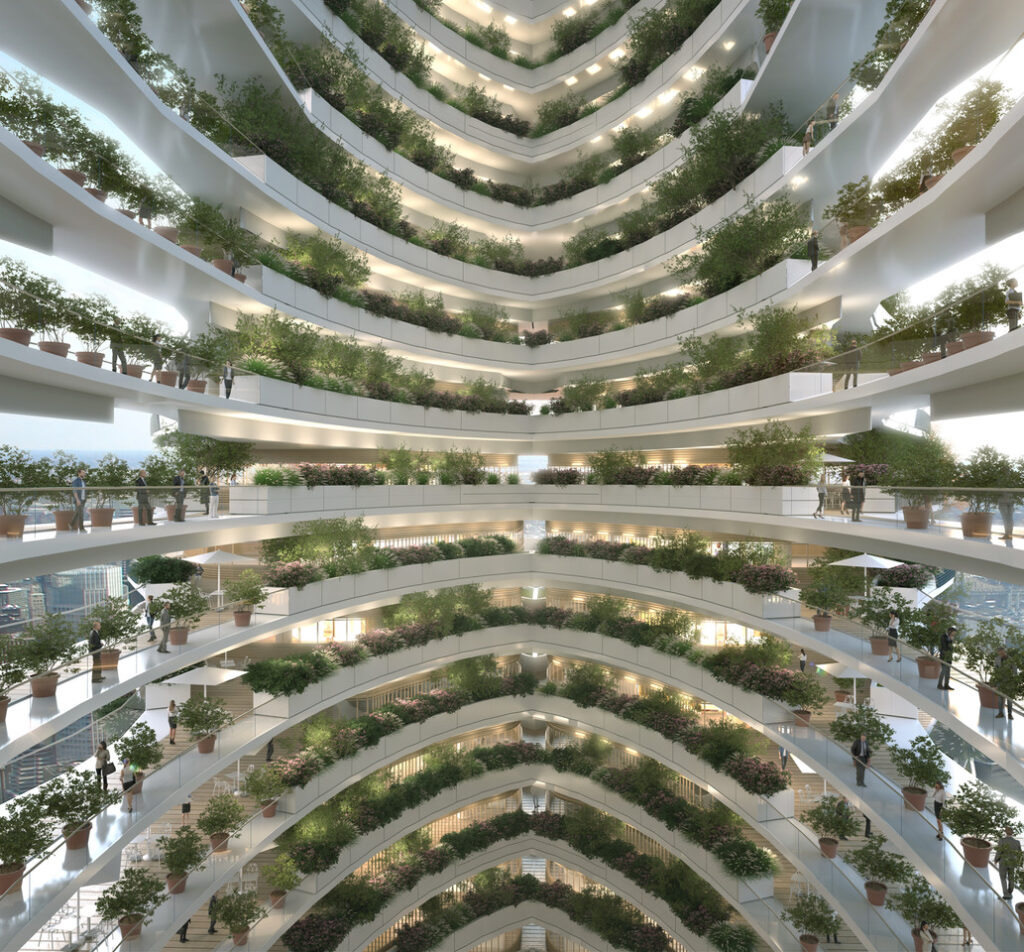
Commuting to and from work generates CO2, while we waste precious time on subways tapping mindlessly on phones. Mandragore wants to give us that time back, by including home work space in every apartment. COVID has given us fresh eyes on an alternative way of working and living: a live-work lifestyle through which we have more time to explore our potential.
The network of underground pipes would be the soul of energy sobriety if French architects Rescubika achieve their dream. The geothermal well system would take advantage of temperature differentials just below earth’s surface. This is warmer than the air above in winter and correspondingly cooler in summer.
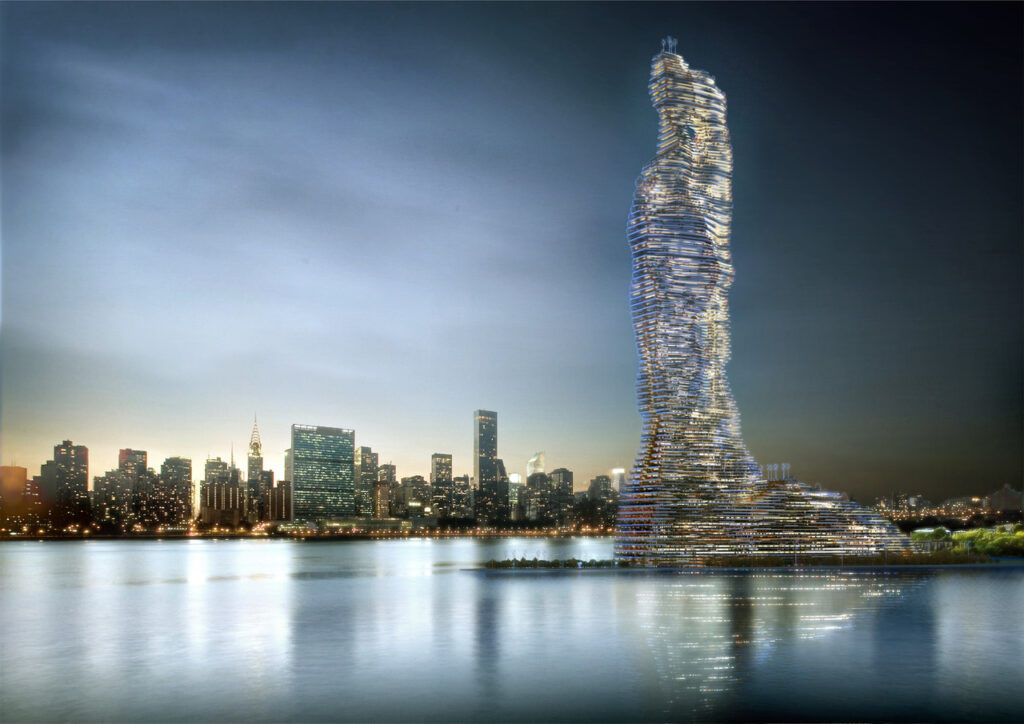
Hence the temperature of the air pumped through the pipes would fall in summer, but rise in winter. This would consume energy which must come from somewhere, but Mandragore has that problem nailed too.
Its response is a green tick for 36 wind turbines, 8,300 shrubs, 1,600 trees, 83,000 square feet of plant walls, and nearly 23,000 square feet of solar panels. And it adds extensive use of timber, in which existing carbon will be trapped for the lifetime of the immense structure of 160 floors.
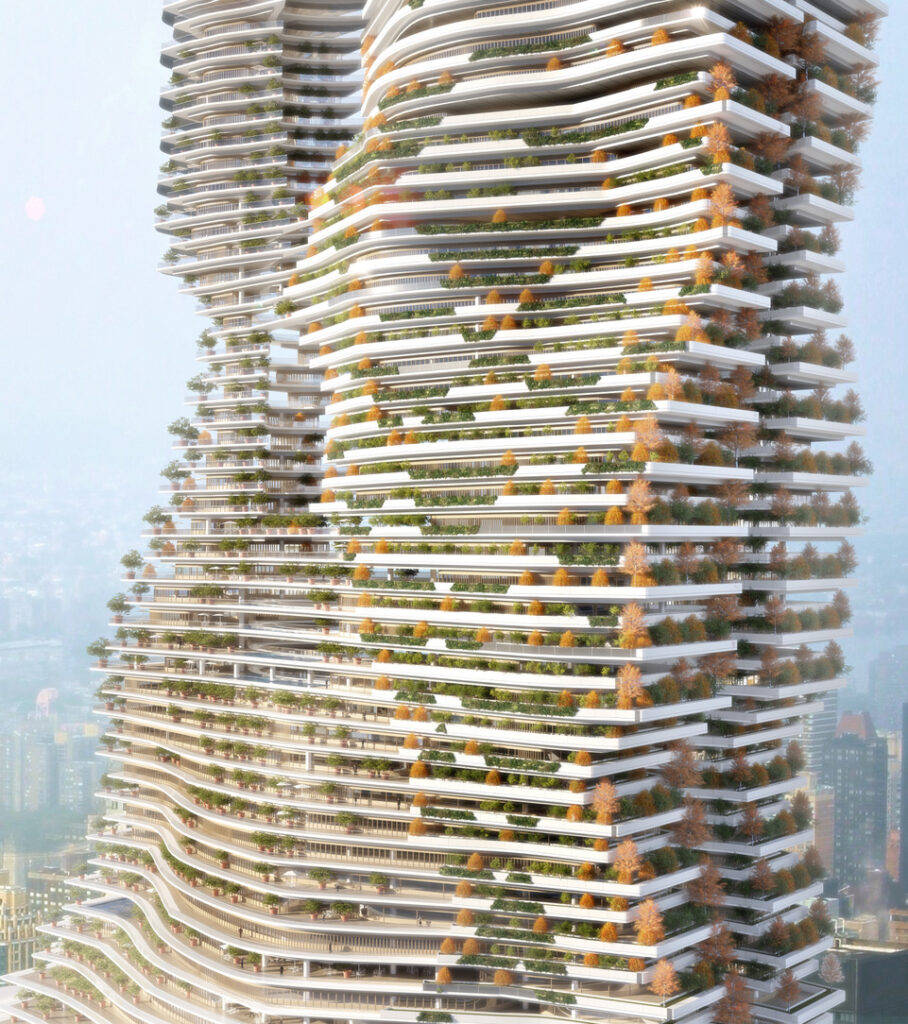
Seen from above, Mandragore has the appearance of a ship setting sail. It looks so tiny against the backdrop of the city, it’s hard to imagine thousands of people living and working there. But how important is this news item really in the context of the pandemic. Why should we care about a building that will probably never be built?
We should care because it shows us what we could do with green technology. Its shape is out of the box which attracts our attention, despite the polemic of the pandemic. If it draws our attention to the greater goal of a carbon-neutral world by 2050, then it achieves the goal of becoming a beacon of hope.
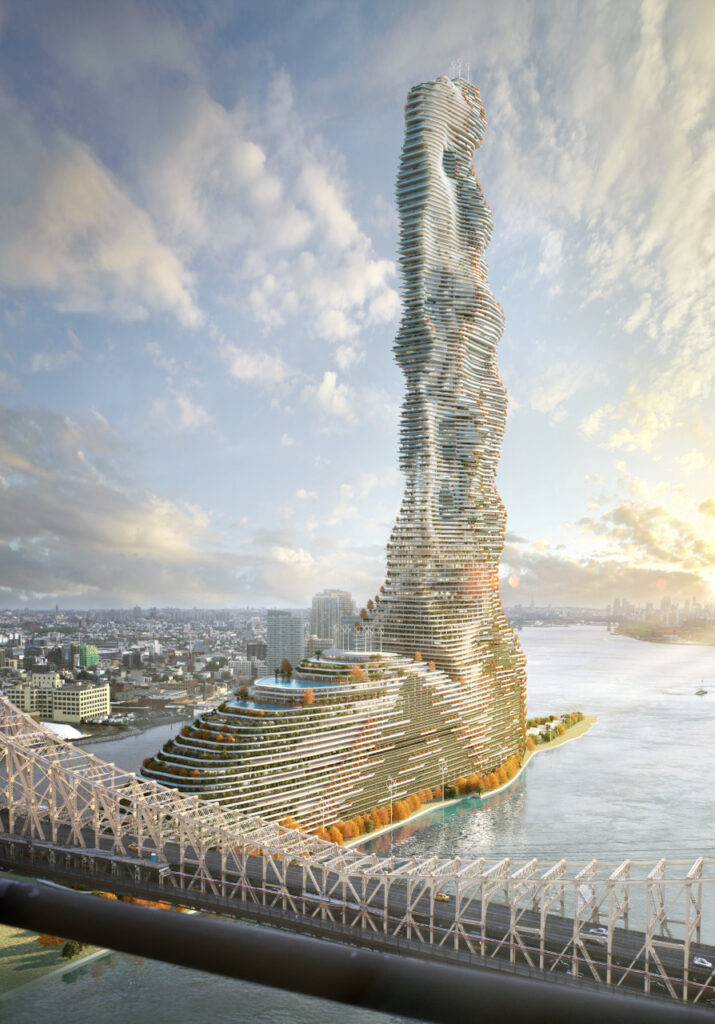
Its second message is we need to break free from architectural convention, if our craft is to remain meaningful in the emerging era. Form must follow function, and if function dictates a sinuous structure so be it. Even if they never build it, Mandragore will inspire others to reach for the sky.
For more information on Mandragore visit www.rescubika.com
ECO TOURISM – Ulaman Retreat – Bali, Indonesia
Inspiral Architecture and Design Studios
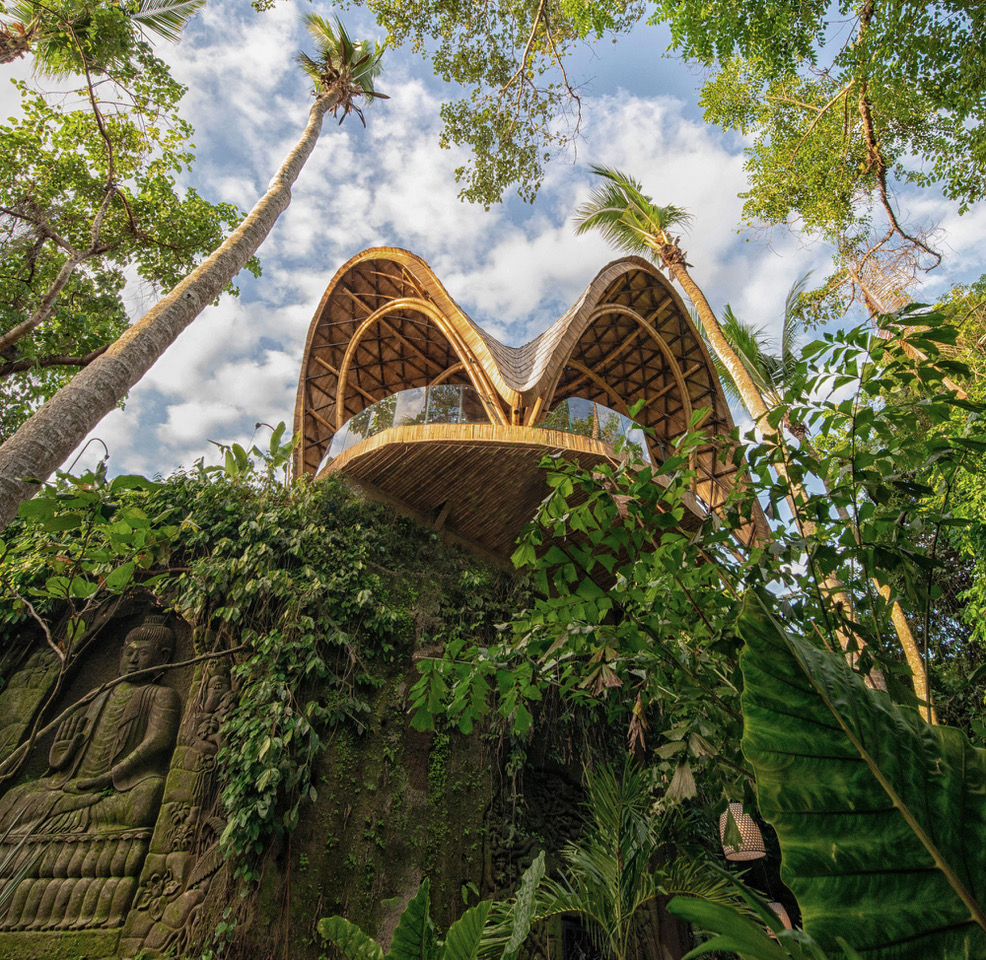
Located inland in Bali, this wellness retreat has been integrated into a forest that borders luscious rice fields on one side and a dramatic river on the other. The river converges water from the whole area creating a junction of small waterfalls that produces enough flow to power a hydro electric generator that can sustain the power of the buildings within the complex. Merging with nature has been at the forefront in the approach to the design, not just by its operation but by using materials found directly on the site and the immediate locality, therefore enabling the resort to become fully carbon zero.
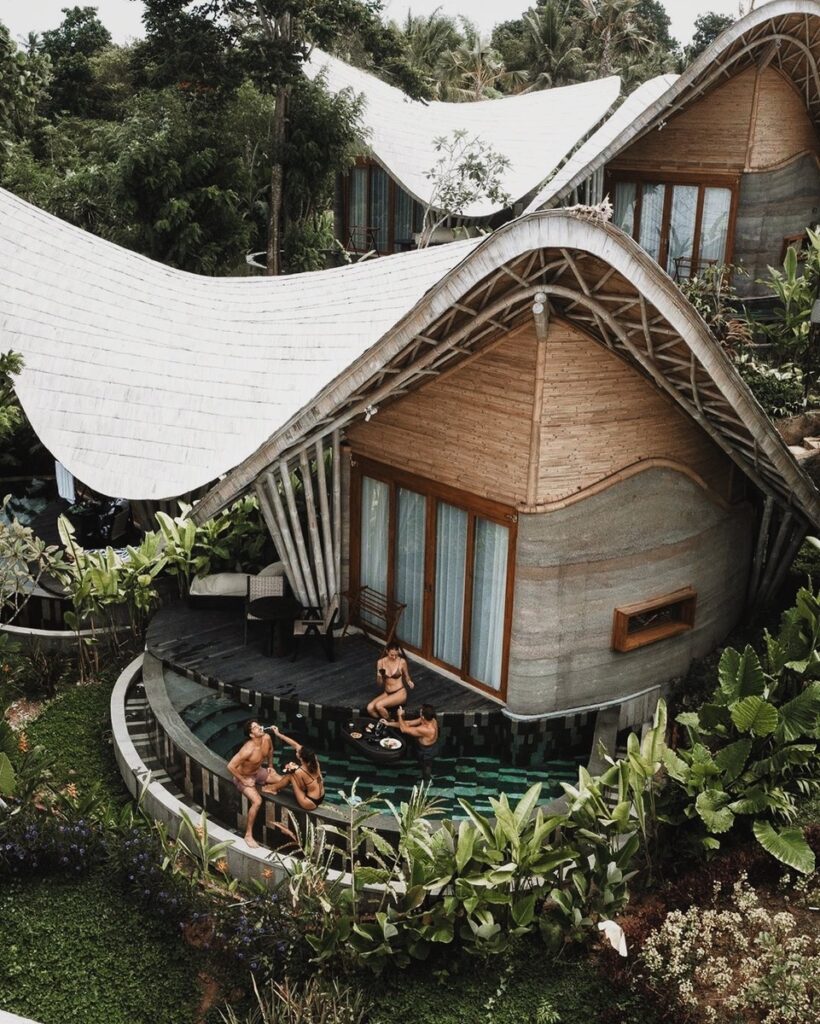
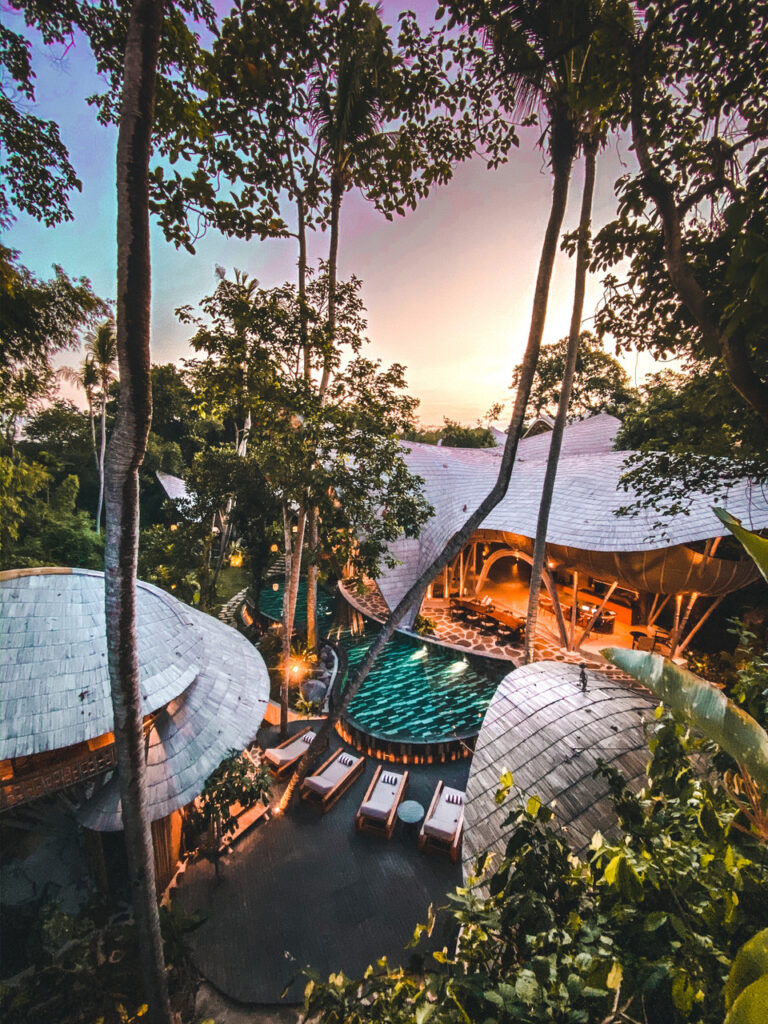
The first instigation of this can be seen in the dramatic use of rammed earth for all ground level walls. Being located on a hill required significant ground works, therefore with much excess soil, creating these significant mass of curved walls was easily justified. Along with being able to connect the occupant to the beauty of rammed earth with its physicality and layered coloring, it also maintains superior insulation and structural properties. Being very intensive to build we were able to recruit the nearby village to work on what has become the most substantial rammed earth project in Indonesia.
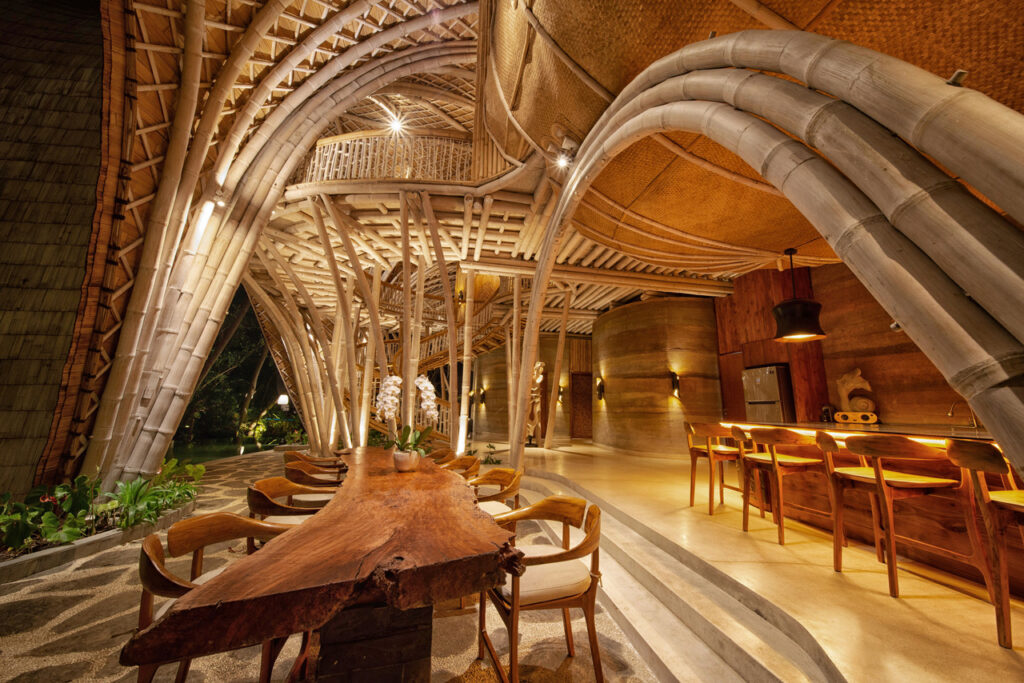
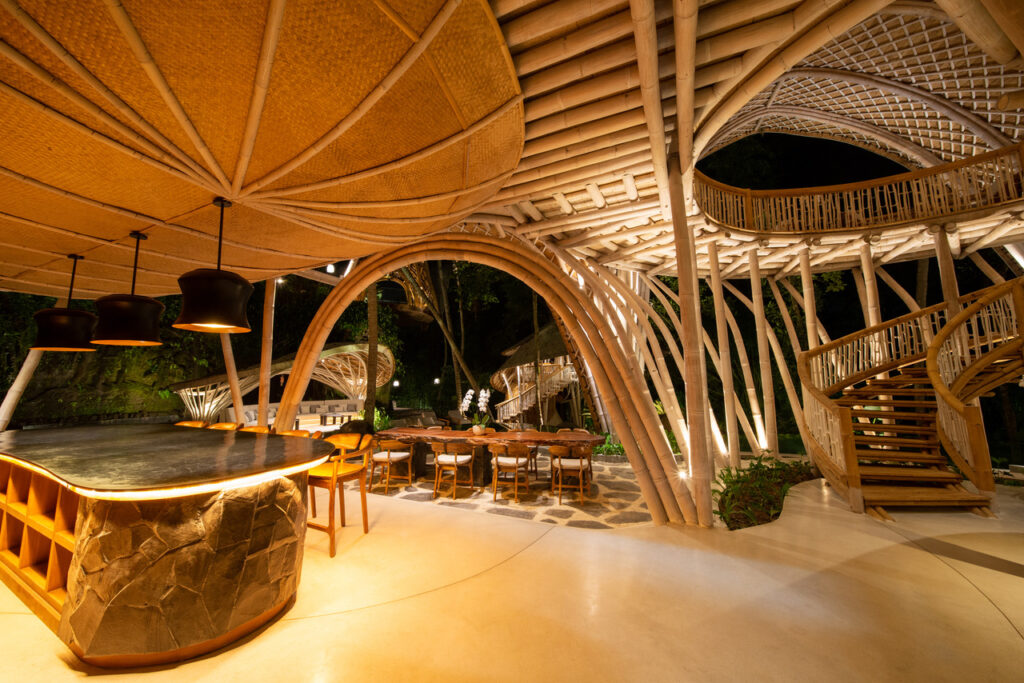
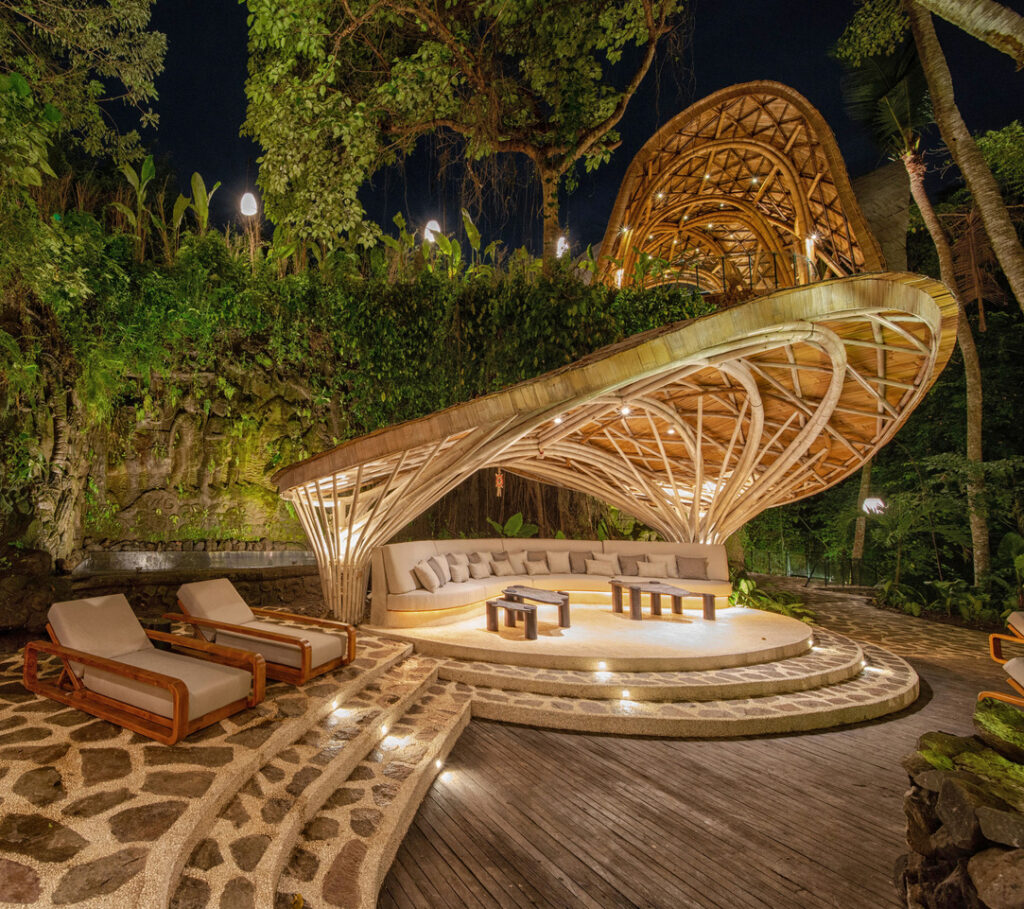
The rest of the structure has been made with bamboo, much of which was harvested from the site. Not only is this fast growing material incredibly sustainable, its flexibility means were able to create spaces that echo the abundance of life in the tropics. Built objects have been created which seek to biologically morph from the surrounding elements, in effect growing from the ground and sprouting among the rich vegetation.
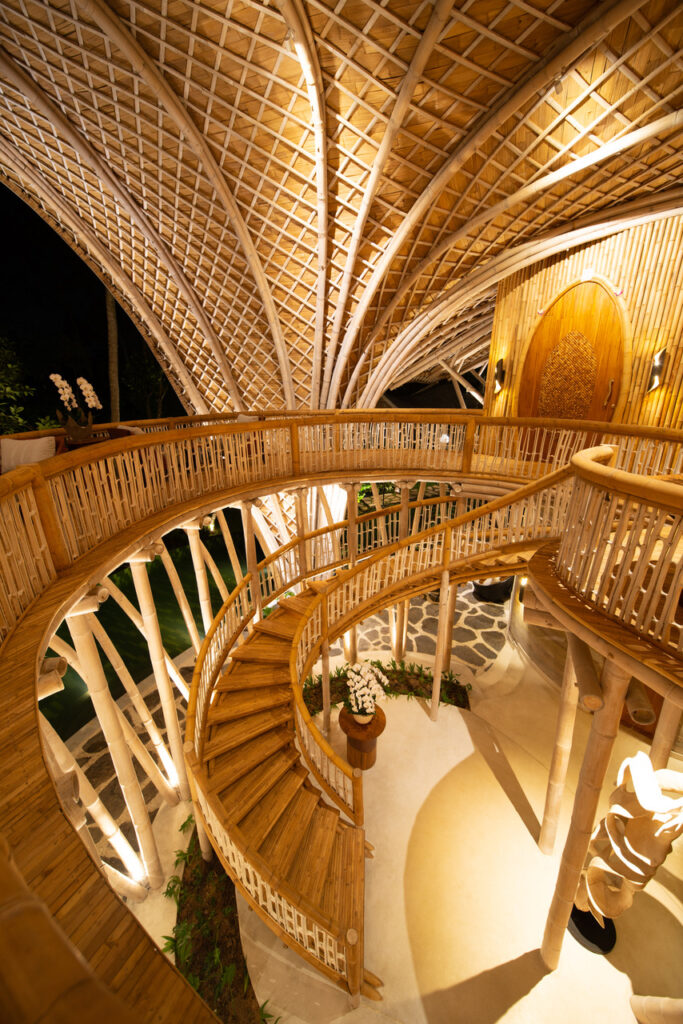
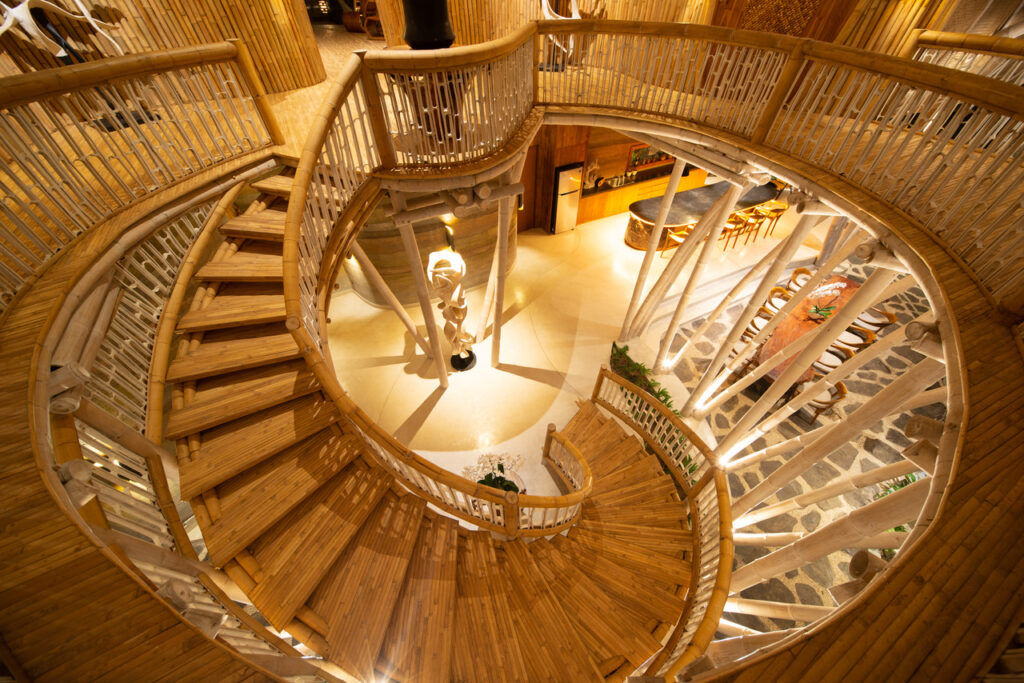
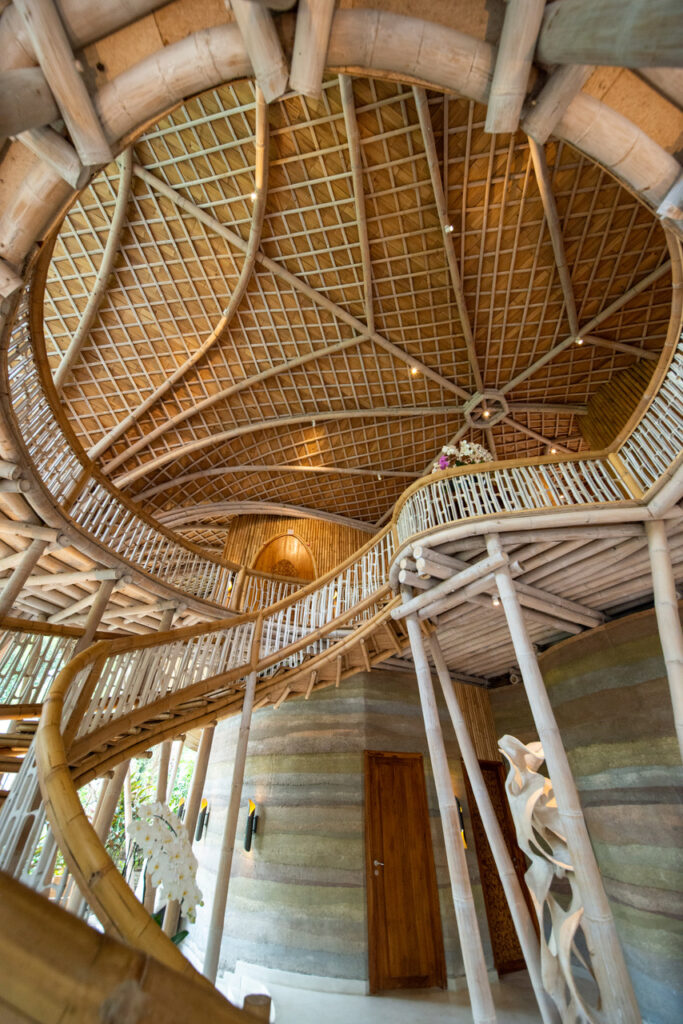
One such building is the yoga studio which literally floats from the cliff’s edge with a cantilevered structure supporting a parabolic bamboo pavilion. The rooms themselves provide the eco luxury that is required for this up market project, with a feeling that is nurturing and in some feature bedrooms, almost cocoon like.
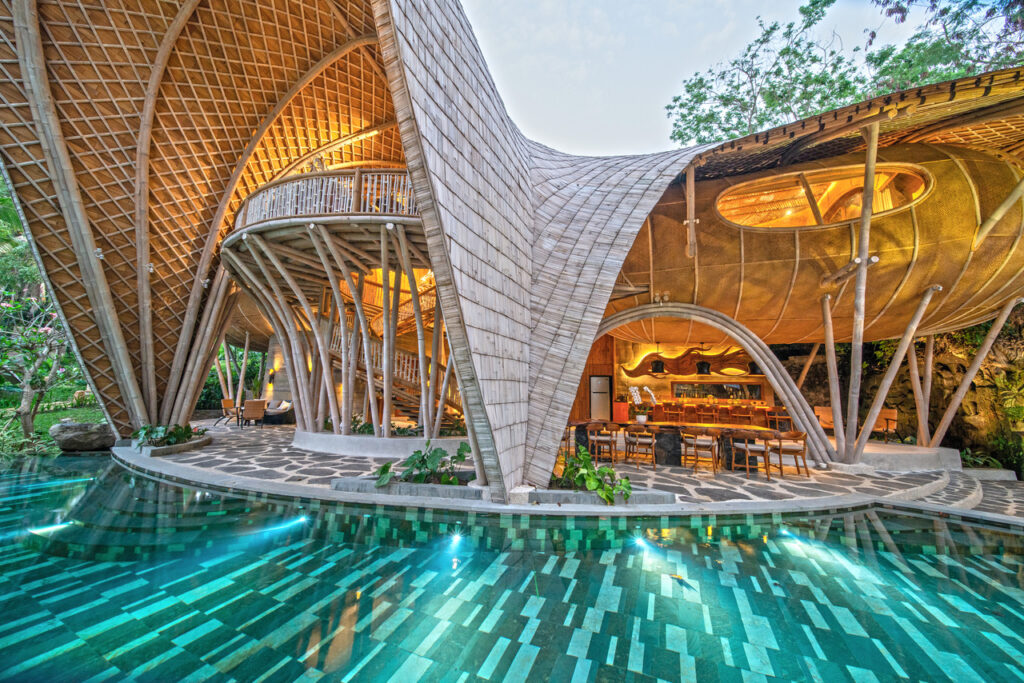
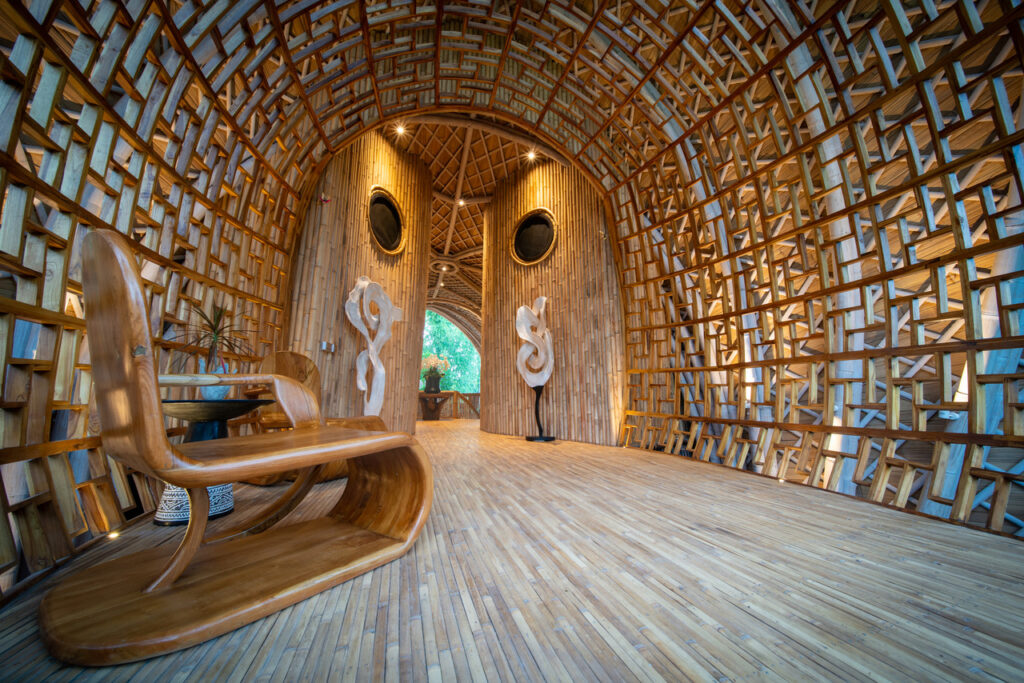
The guest villas too look towards a unique design, yet with the common denominator of bamboo architecture and the warming tones of rammed earth that make up the resort. The curvilinear formations of the roofs can be admired from different heights and angles while the reflections from the meandering pool below add to the effect.
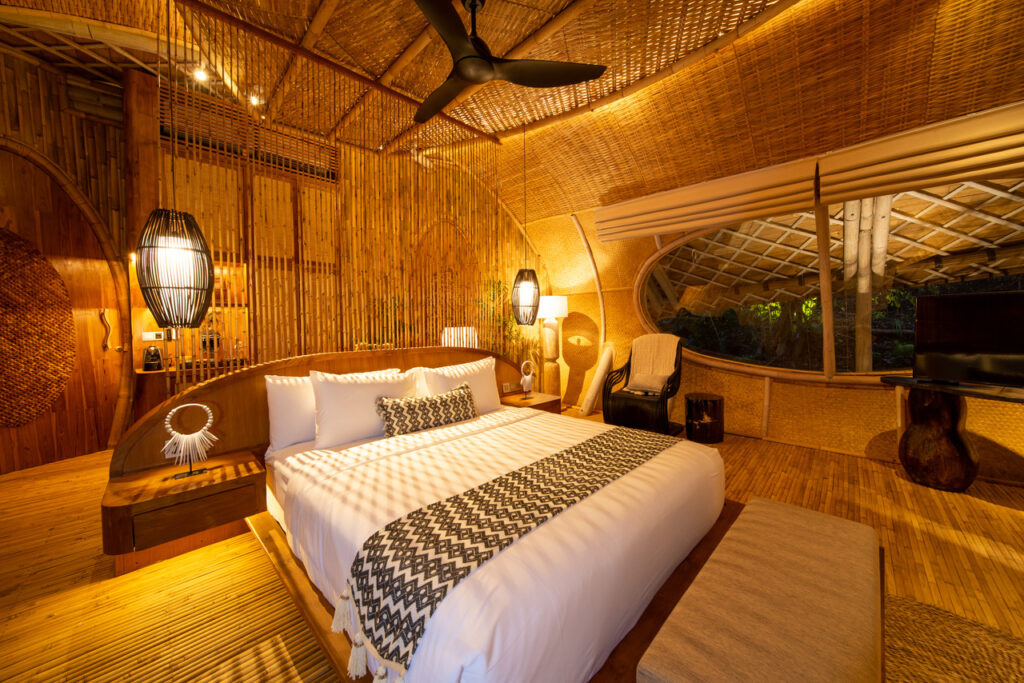
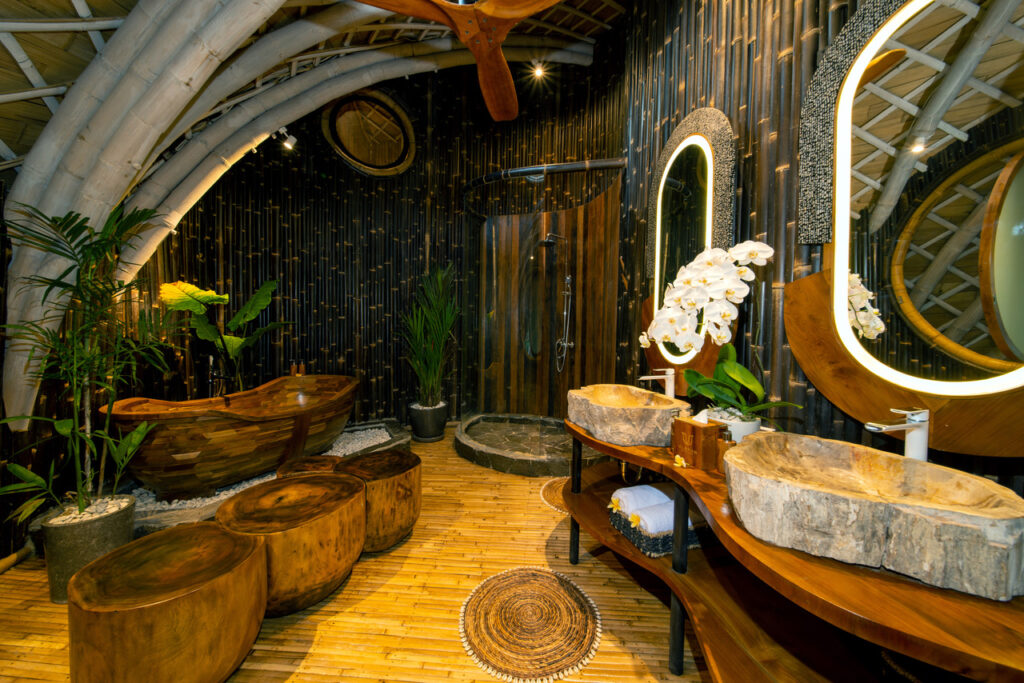
Text description provided by the architects.
CAST AWAY ON BORA BORA IN YOUR DREAMS
A piece of paradise on an idyllic blue lagoon in French Polynesia
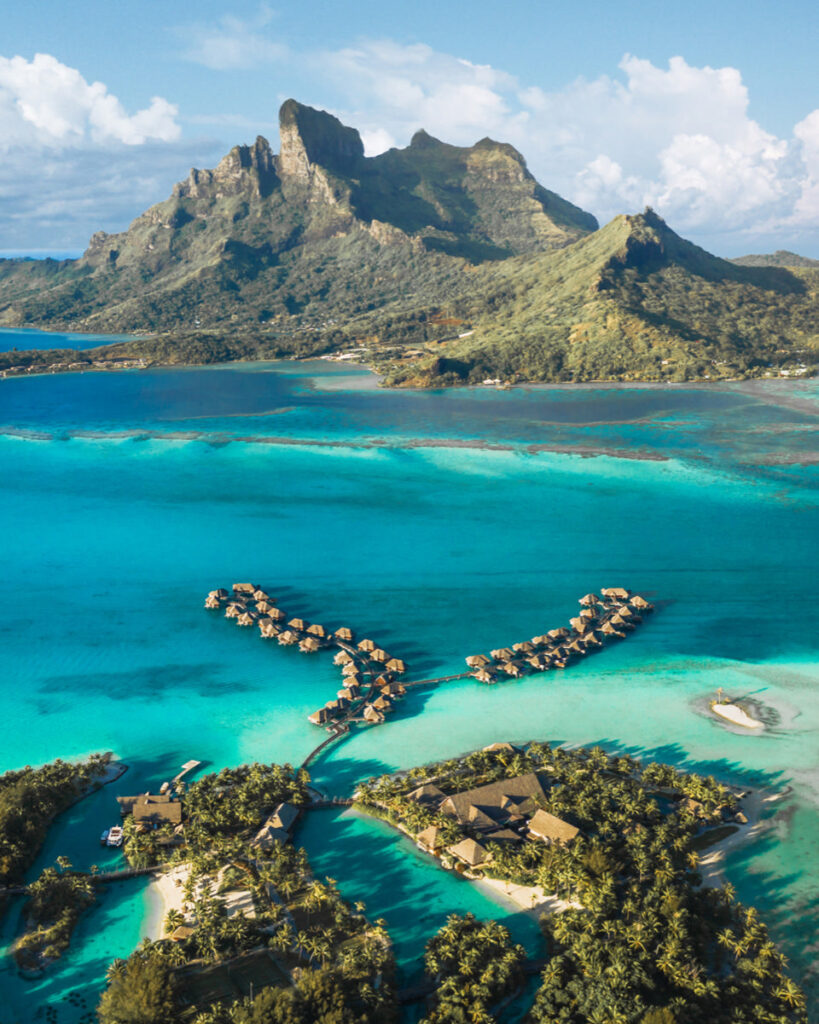
In the shadow of Bora Bora’s Mount Otemanu, overwater bungalows and pristine white beaches welcome you to enjoy your time at the Four Seasons Resort Bora Bora. Experience a little piece of paradise, explore the turquoise waters of the lagoon and discover colourful corals and thousands of exotic reef fish. Ending your day in your private pool guarantees marvelous views of the golden sunset and the Polynesian night sky.
The resort is located on a Motu, a private islet, on the French Polynesian Leeward Islands. It is the perfect place to take you away from the stress of everyday life and lets you relax in absolute privacy alongside a tranquil turquoise lagoon. The secluded location with breathtaking views of the ocean and Mount Otemanu makes it one of the most loved resorts in the world – a guarantee for a memorable stay.
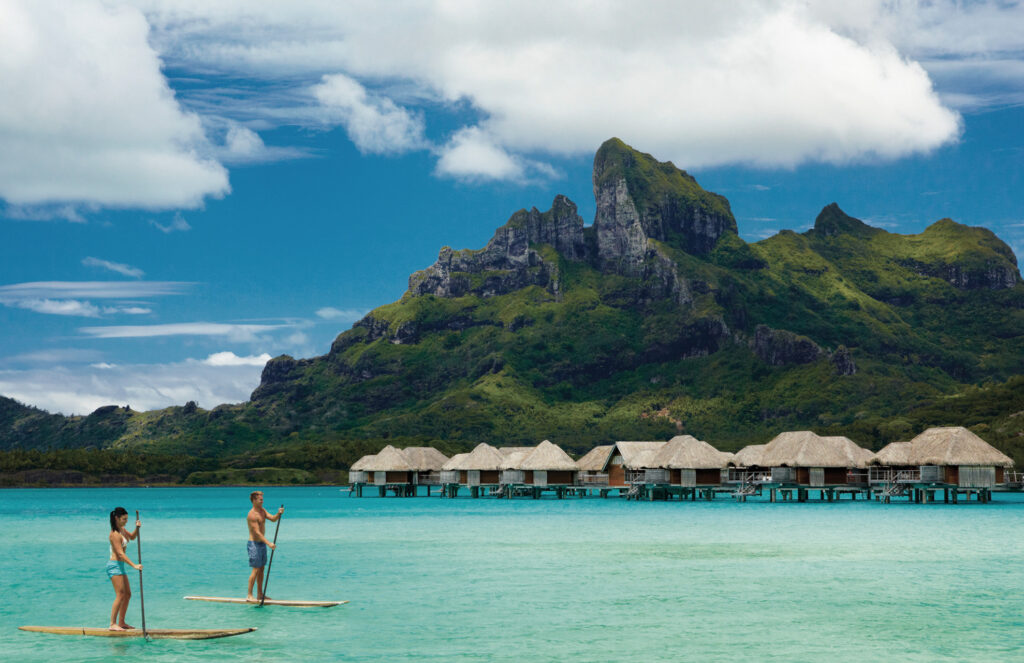
Bora Bora is an equatorial atoll in French Polynesia, midway between Papua New Guinea and Ecuador. Days are hot, and nights are warm throughout the year. The ocean temperature averages a comfortable 80 ºF / 27 ºC, making this an ideal location for a laid back aquatic holiday stay.
There’s a single main entrance into the atoll, wide and deep enough to admit cruise ships. American Airlines, Air France, and Air Tahiti provide regular services. Bora Bora Four Seasons Hotel is on the eastern atoll fringe, with beach access to the lagoon and ocean.
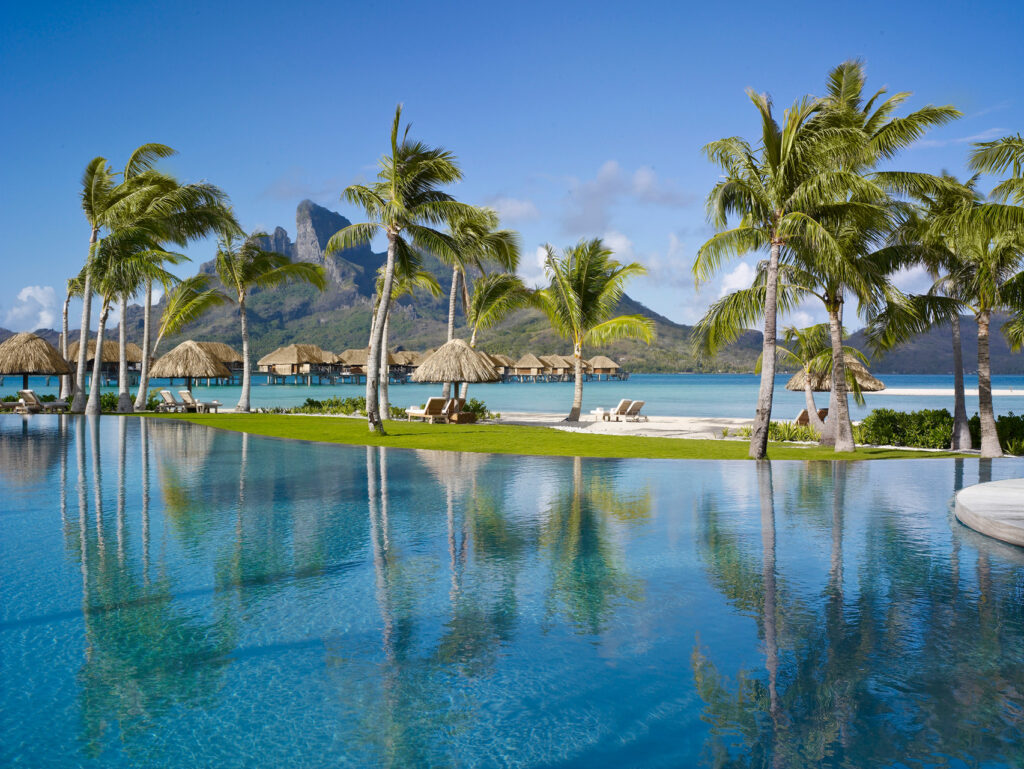
Recently awarded the title of “Most Epic Stay Hotel in the World” by AFAR, the Four Seasons Bora Bora Resort offers three different types of accommodations. Wake up to a stunning ocean view in an Overwater Bungalow Suite, take your Overwater Bungalow experience to the next level with a Specialty Bungalow, or reserve your own beach vacation with a Beachfront Villa Estate. Regardless of your choice the many different activities at Four Seasons Bora Bora will make your trip unforgettable.
Overwater bungalow suites with traditional teak wood furnishings, and Polynesian artwork add a touch of luxury to a holiday of a lifetime. It’s almost like living in a thatched hut in a traditional village.
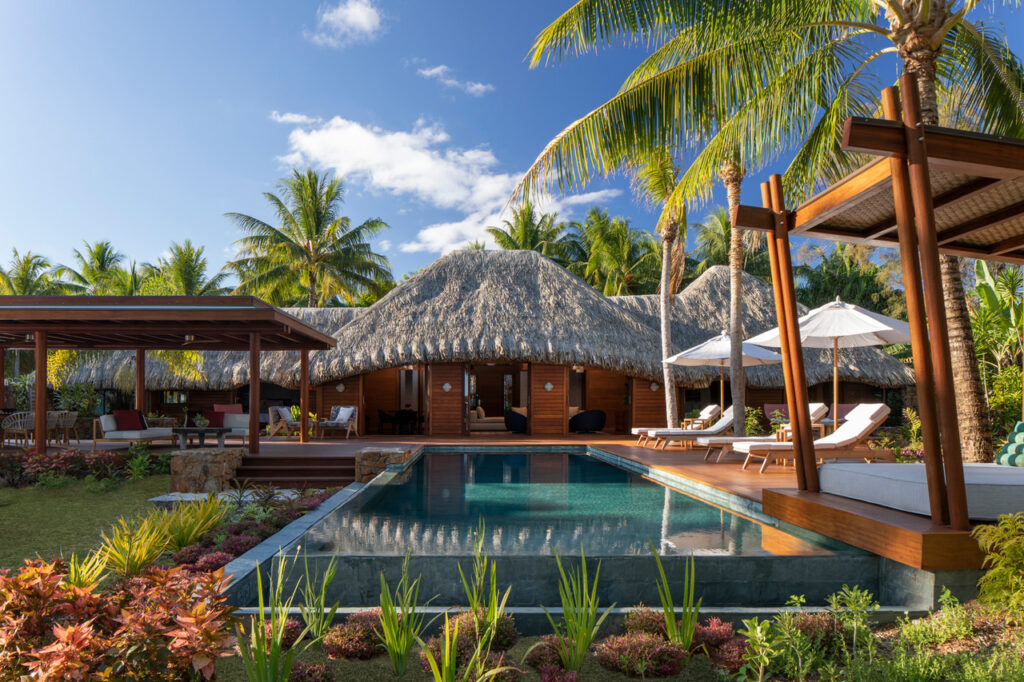
Four Seasons Bora Bora is an exceptionally well-endowed resort. But nature added the final touches by including one of the best snorkeling and diving destinations in the world. The resort is a heartbeat away from a breathtaking lagoon.
The narrow openings in the coral atoll, between lagoon and ocean teem with aquatic life that congregates to feed on the rich bounty of food flowing through. The more intrepid can swim alongside manta rays, and sharks cruising along the coral wall.
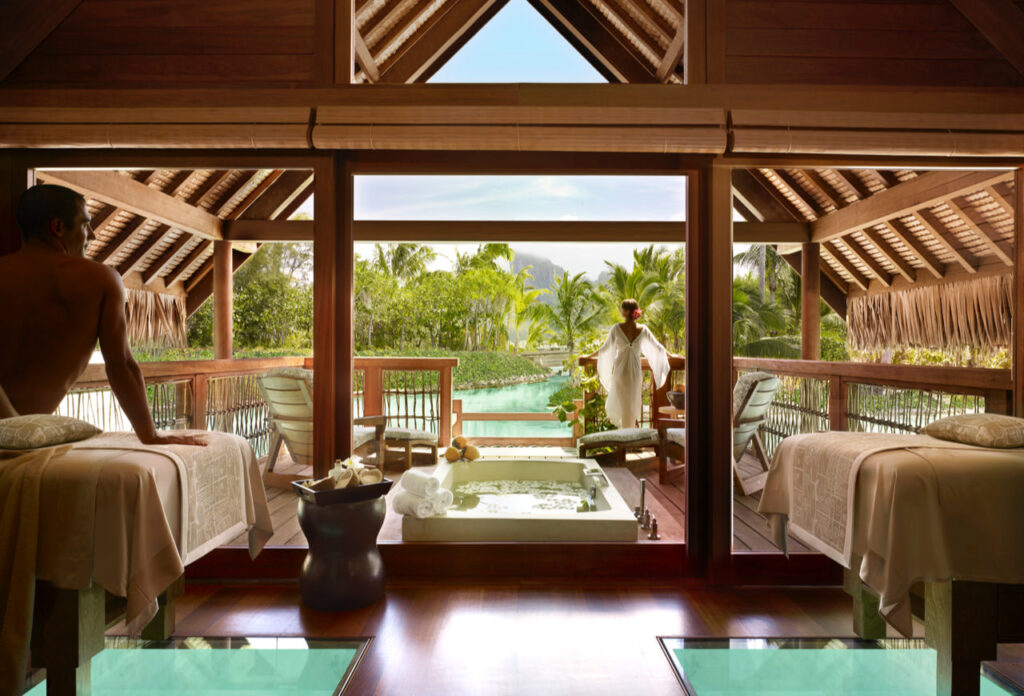
Across the lagoon on the main island, Mount Otemanu rises 2,385 feet above the water. Guests have a choice of sightseeing boat tours, helicopter rides, catamaran trips and hiking adventures.
Wilderness treks meander through the foothills hinting of a castaway experience. History buffs can take a 4-wheel drive around the island, to view caves, ancient archaeological relics, and giant cannons dating back to the South Pacific military campaign.
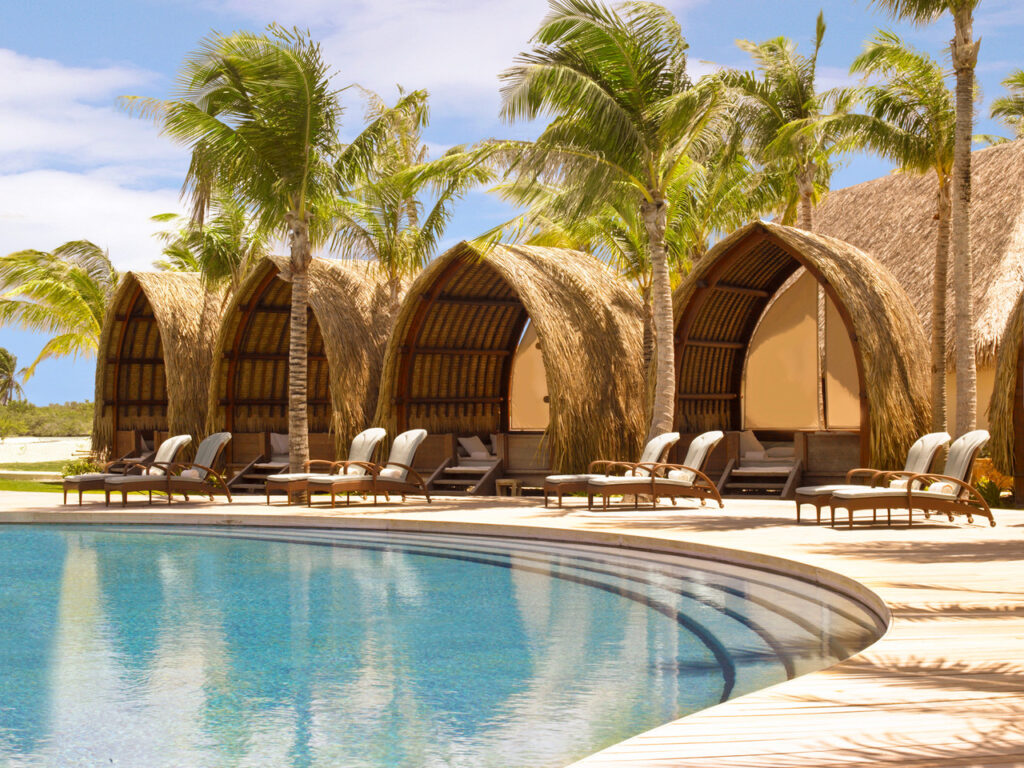
There are larger, land-based beachfront villas, for family groups who prefer the luxury of a private pool. These have indoor-outdoor flows to full al fresco kitchens, and access to private beachfront settings.
These spacious bungalows also have traditional finishes, featuring local Polynesian architectural materials and styles. Guests are allocated dedicated villa hosts, to ensure they have everything they need and a personal guide.
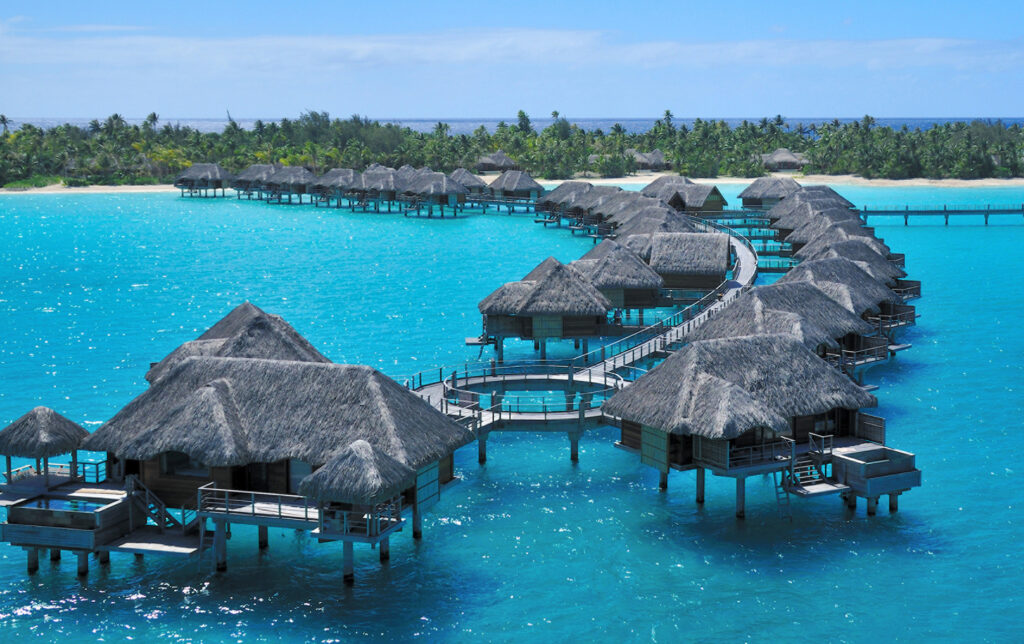
The Kahaia Haven Spa at Four Seasons Bora Bora takes inspiration from a Polynesian tree that relieves headaches and pains, and provides timber for dwellings and trees. Wellness services include traditional, and western practices to nurture body and soul.
But they also offer healthful outdoor therapy, including yoga on the shore of the lagoon, and a vitality plunge pool close by natural vegetation but also providing spectacular views across foothills to the lagoon.
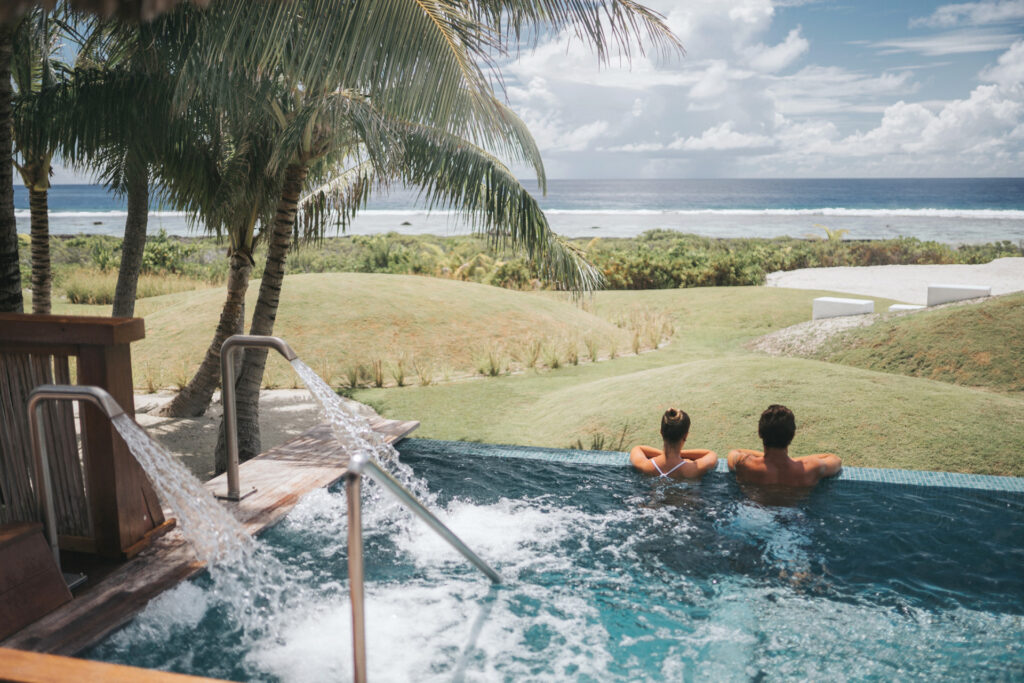
Fine French wine and cuisine are available at the Arii Moana Restaurant, presided over by executive chef Eric Desbordes from Thiais, France. The Fare Hoa Beach Bar and Grill provides all-day dining, and cocktails with toes in the sand. While a traditional Tahitian Fish House showcases local marine foods.
Lovers of each other, and of the quiet life can elect in-bungalow dining, or an intimate breakfast in an open-air restaurant with views of Mount Otemanu. Or if they feel like something completely different, they could paddle to a private island for a champagne dinner for two, as the sun sinks closer to the rim of the ocean.
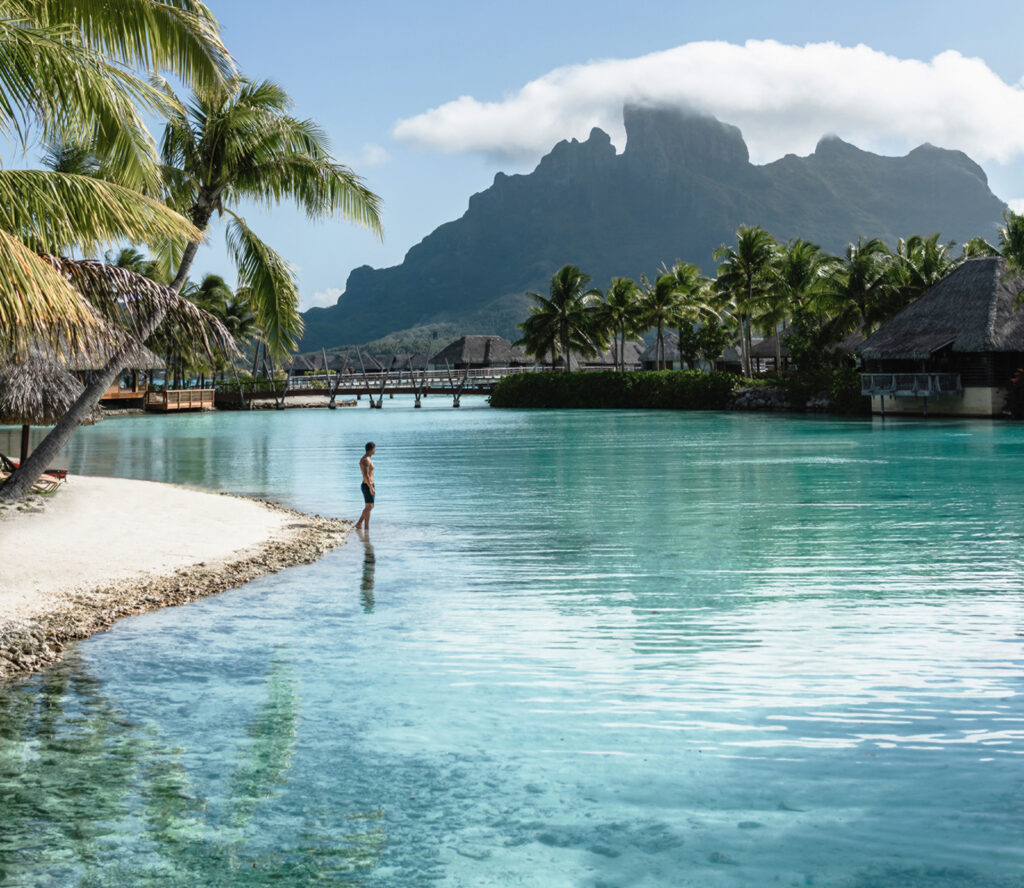
Sheer luxury competes with nature’s stunning beauty, at Bora Bora Four Seasons Hotel on an equatorial island in French Polynesia. Yet the architecture blends seamlessly everywhere you go and the interfaces are transparent.
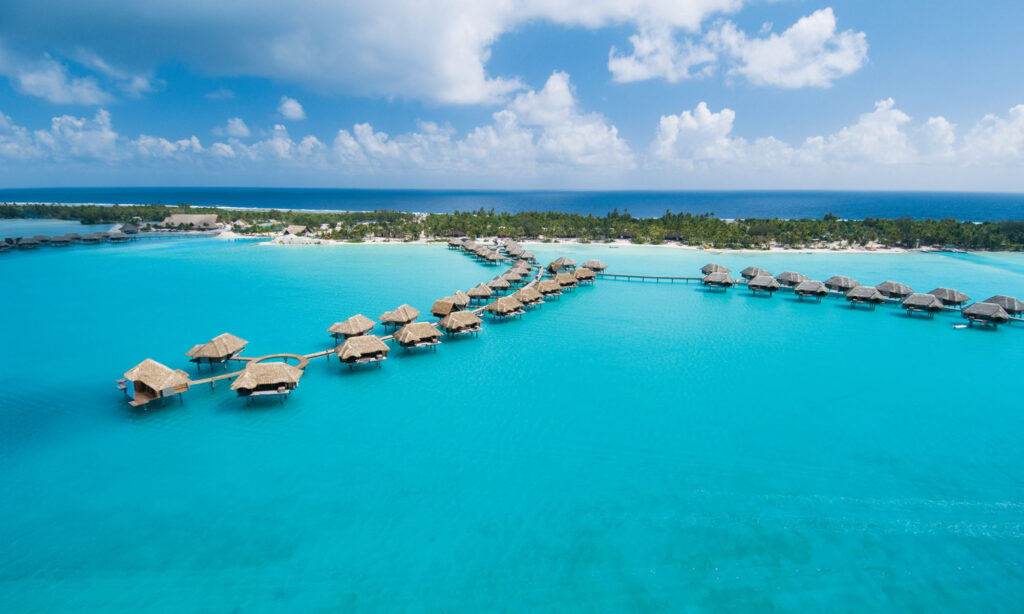
Architect Didier Lefort Architect Associates oriented the buildings to optimize island views, and use natural ventilation to reduce air conditioning. They used simple shapes to downplay the intrusion, and cultural elements to enhance the serenity.
A sense of understated opulence, underpinned by personal service follows you everywhere in this Four Seasons resort. There’s a sense of spaciousness everywhere you go. Sometimes, if you let your imagination soar you could be that castaway in your dreams.
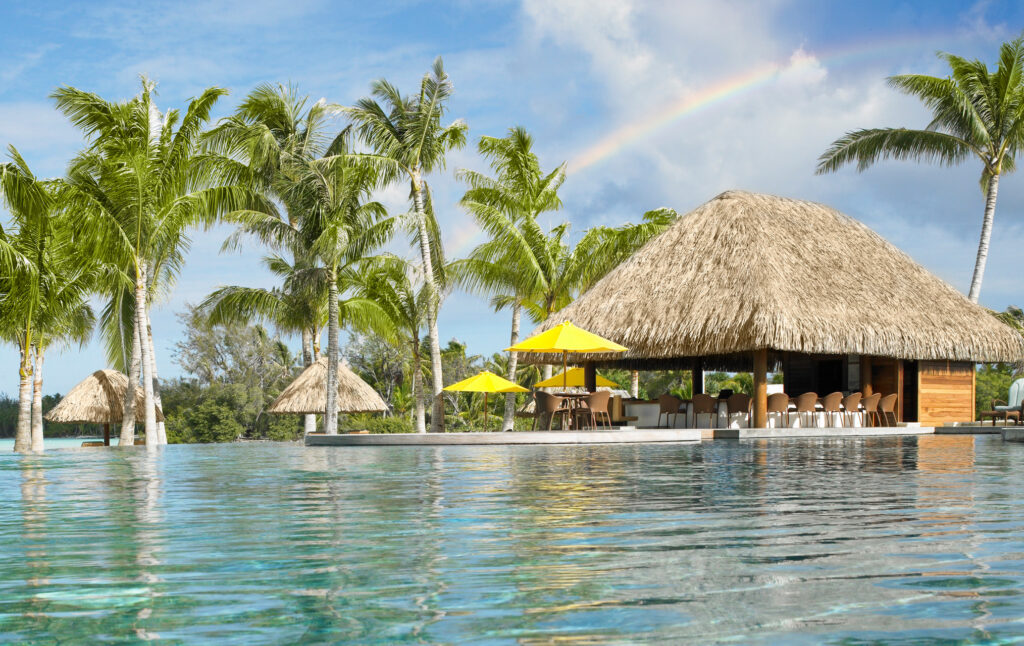
Serenity envelops you while you are here, and invites you to return. Perhaps it’s the laidback life style of the Polynesian people. Maybe it’s being able to wake when you like, sleep when you like, and dine with your feet wiggling in the sand. It’s certainly an opportunity shake off the stress.
There are echoes of the rich culture of the Polynesian islands in adornments of everyday items. These features find their way into the artwork, the woodcarvings, and even the patterns in the textiles.
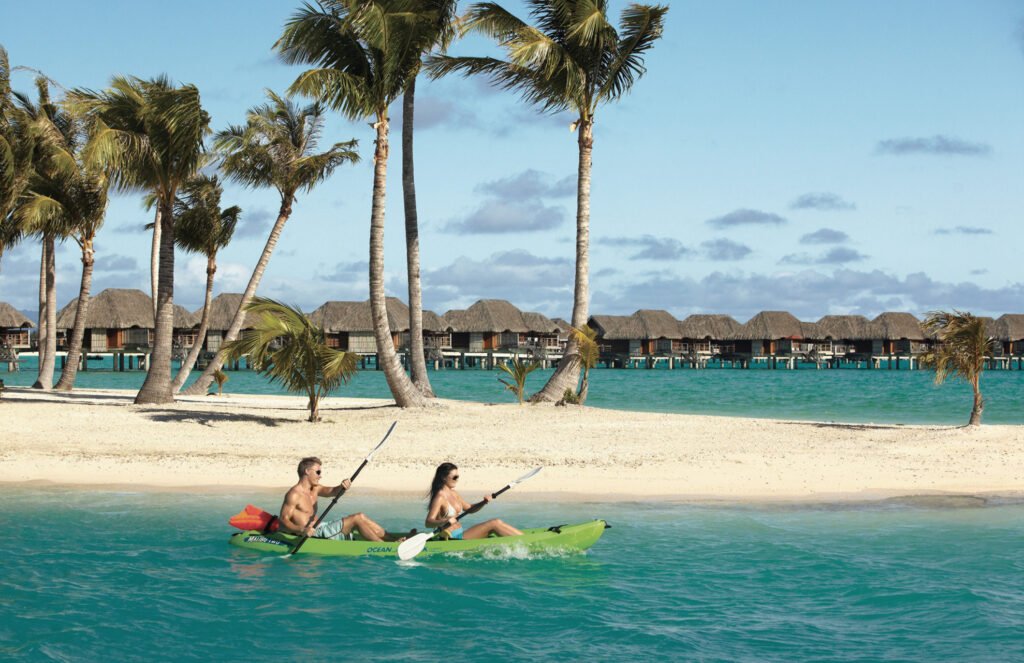
But perhaps the ultimate experience in this special place is to retire for the night to luxuriously understated accommodation over a peaceful lagoon. What better way can there be to drift off. Other than listening to the sounds of the universe, as the gently-lapping water lulls you to sleep…
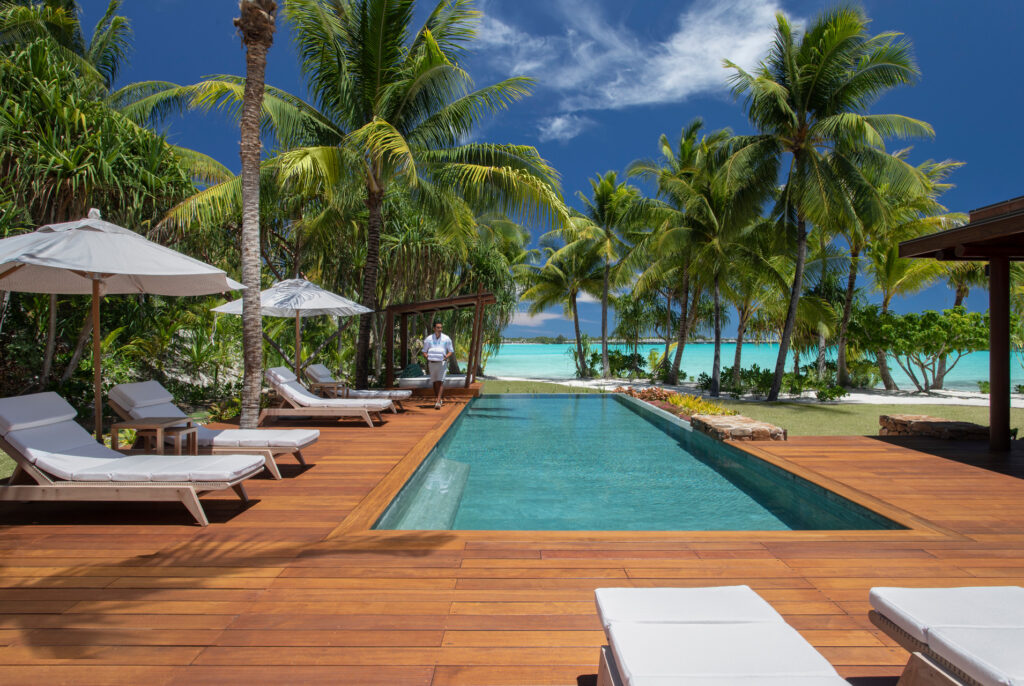
Coral Reef Restoration Project
The Bora Bora atoll relies on its coral reef to sustain the marine food chain, and attract sufficient tourists to maintain the economy. Four Seasons Bora Bora planted its foundations in the living reef.
Global warming is raising sea water temperatures closer to the point where the tiny coral organisms can no longer survive. The rich marine life, including the seaweeds that root on it could vanish forever, unless something can be done to sustain the coral.
Four Seasons Bora Bora is participating in a project to grow artificial reefs, and sustain marine life despite this threat. A low electric current passing through the water causes marine crystals to develop on an electrode, which encourages natural coral growth.
Resorts guests may participate in this project, by placing new ‘seeds’ of artificial coral in the lagoon. Then they can find them with GPS tracking when they return, and see how their ‘baby coral reef’ has grown.
This ‘Biorock’ technology is safe for swimmers and marine life, although there is some evidence it repels bull sharks and Caribbean reef sharks. This is because it affects their electro receptive ability during the final stages of their attacks.
PHOTOS COURTESY FOUR SEASONS HOTELS
Urban Forest
Going beyond the headline of a ‘green building’
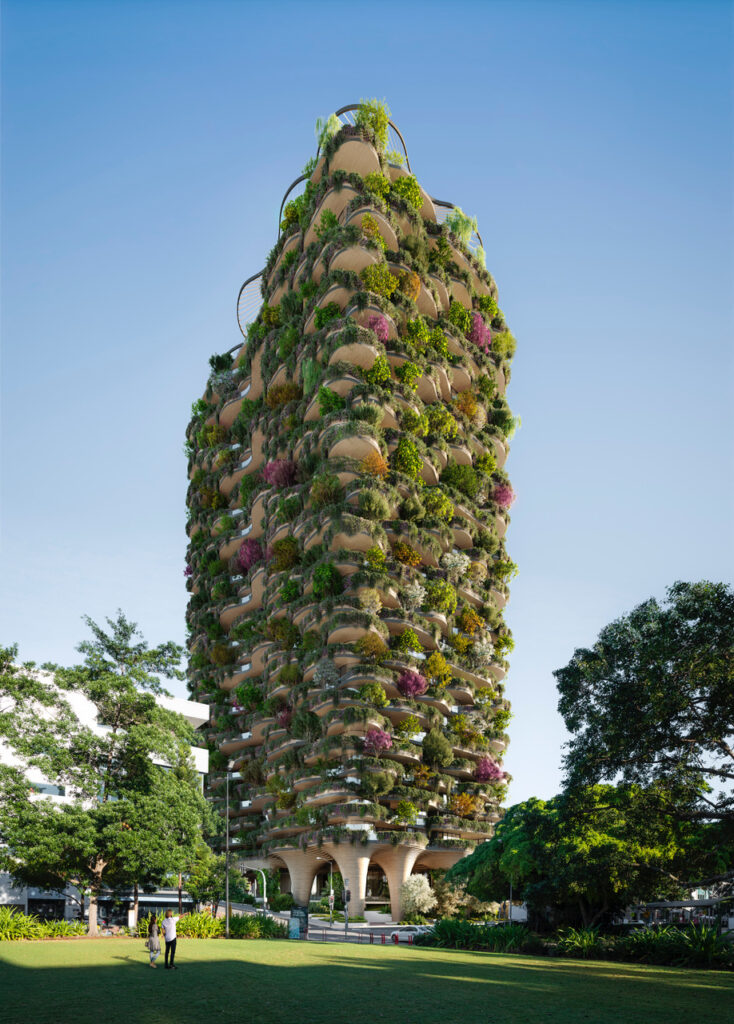
“Urban Forest is probably the greenest we can design with the current “greening” tools and regulations available to us.”
Koichi Takada
Featuring one of the world’s most densely-forested vertical gardens, Urban Forest by Aria Property Group and designed by Koichi Takada Architects, is a 30-storey mixed-use residential high-rise located in the cultural precinct of South Brisbane, Australia. The building includes 382 apartments, a two-storey rooftop with garden and residential amenities, and an open public park on the ground level. The site of the building totals 2,782 square meters and it will have an overall floor area of 55,000 square meters.
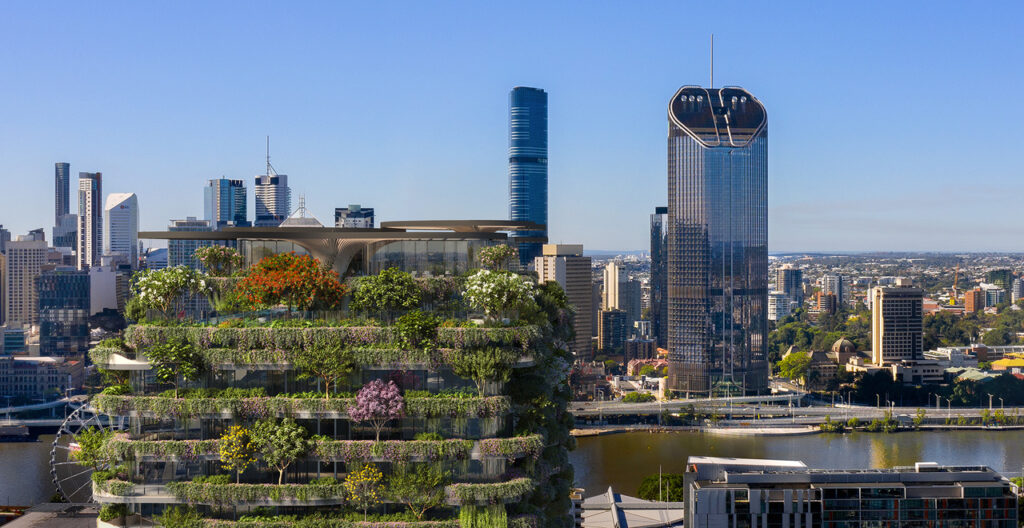
Vertical planting in high-rise buildings is part of a new movement that sees architects bringing greenery, biodiversity, oxygen and mental health benefits back to high-density city living. Urban Forest achieves 300% site cover with living greenery, featuring 1000 plus trees and more than 20,000 plants selected from 259 native species. This is more than five times the number of trees found in nearby Musgrave Park. The landscape is not just an attractive feature, but is a dynamic, active component of a sustainable building, increasing biodiversity and reducing the ecological footprint of the city. It will also create a green spine connecting the Southbank Parklands with Musgrave Park.

“Since the industrial revolution, our society has focused on mass production. Now is the time to shift towards mass greening. 2020 has represented a number of different crises to our society and environment from the devastating bushfires in Australia to COVID-19 pandemic crisis worldwide. With the post COVID-19, I think it’s a great opportunity to pause and rethink and not just adapt, but shift the paradigm from industrial to natural. Concrete, steel and glass are very hard and solid industrial materials. Let’s call them dead materiality. We need to be embracing more living materiality, living architecture. One take away from the COVID-19 pandemic crisis is the realisation that we are all living things. We are here to live, not defy death in some way. Our architecture should do the same.”
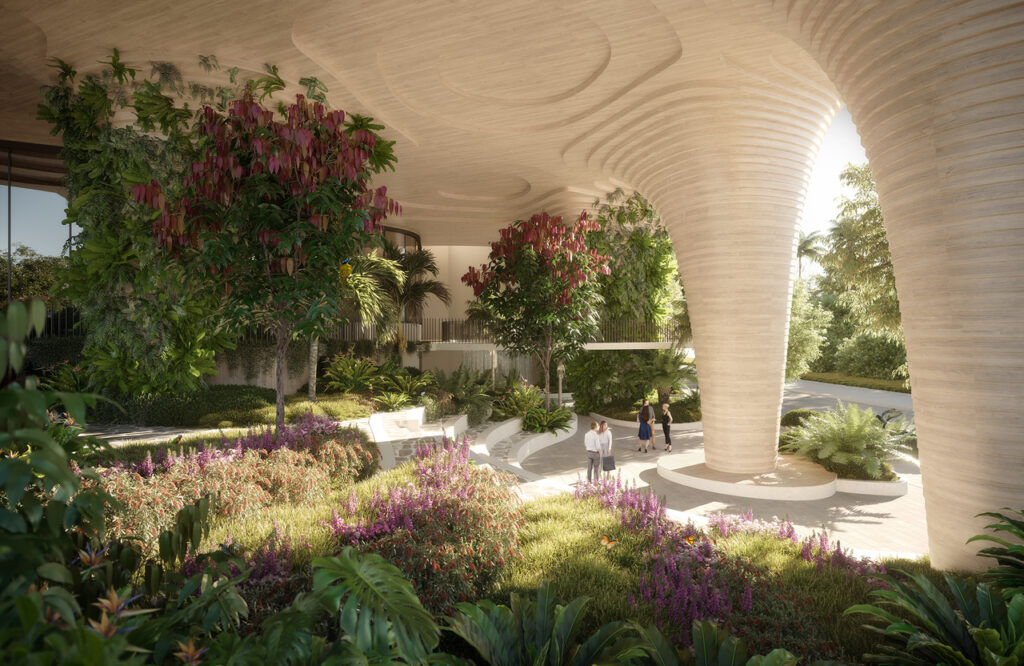
Urban Forests ambition is to be the world’s greenest residential building. By targeting 6-star Green Star rating, equivalent to LEED Platinum, Urban Forest represents another stage in the evolution of the architectural vertical garden. It will set the benchmark for sustainable and subtropical high-rise apartment buildings, creating an exemplar in design-led development and innovative ESD standards in Brisbane. Passive design principles make the most of the subtropical climate, maximising natural light and allowing cross-ventilation.
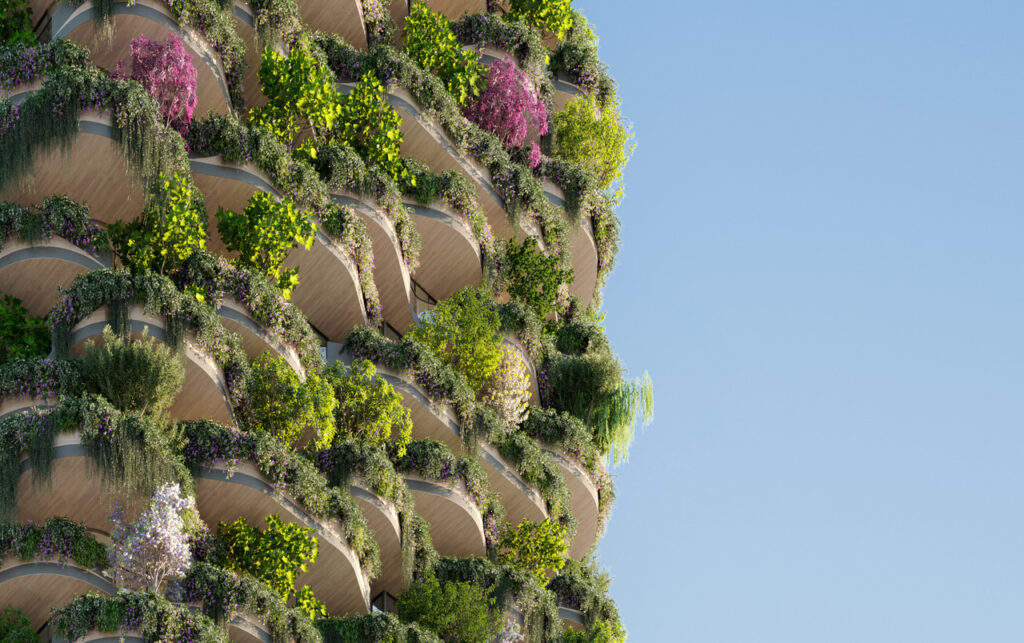
Organic, sculptural, stepping facades covered in greenery provide physical and visual insulation from the sun, wind and rain, while sky gardens and facade vegetations also provide natural thermal and solar insulation. Other sustainable features include solar panels to generate renewable energy, gardens irrigated by harvested rainwater and grey water collection, carbon offset, and the use of sustainably-sourced and high quality, low maintenance materials. Because this is a low-energy building with high water efficiency, operating costs are reduced also.
On the ground level, the building is designed as a useable, comfortable and friendly public park for the community. The building is lifted up, just as the traditional Queenslander is lifted on stumps, with tall sculptural columns envisaged as ‘tree trunks’ supporting the tower above. This space, filled with dappled light, brings the experience of the building to the ground level creating connection to the public domain over 1,642 square meters.
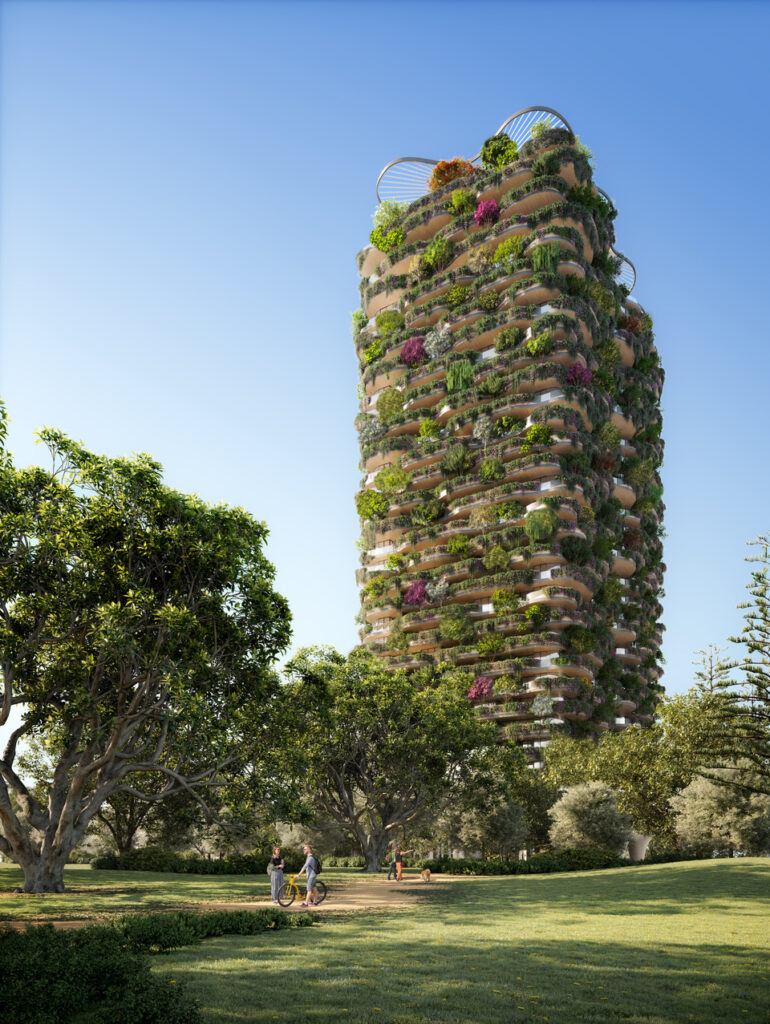
As an example of world-class sustainable design, Urban Forest gives back to the community, creating a home with a strong sense of place and identity. A world class visitor experience and tourist centre will be created on site to educate patrons on building design, plant types and biodiversity. The centre will provide the opportunity to engage with and educate local schools, universities and visitors on the sustainable performance of the building. By investing in the community, Urban Forest invests in the future of the planet and people.
Urban Forest offers a holistic approach to sustainability, creating not just a ‘green’ building with heavy vertical vegetation, but also setting a benchmark in environmentally-sustainable design and offering a social sustainability approach through the creation of a large public park on the ground level. And a best-practice approach to energy and water management. In this way, Urban Forest strikes the balance between environmental, social and economic sustainability, prioritizing people, planet and profit.
www.koichitakada.com
FALL 2020
Heatherwick Studio unveils EDEN skyscraper, a 20-storey residential vertical garden in Singapore
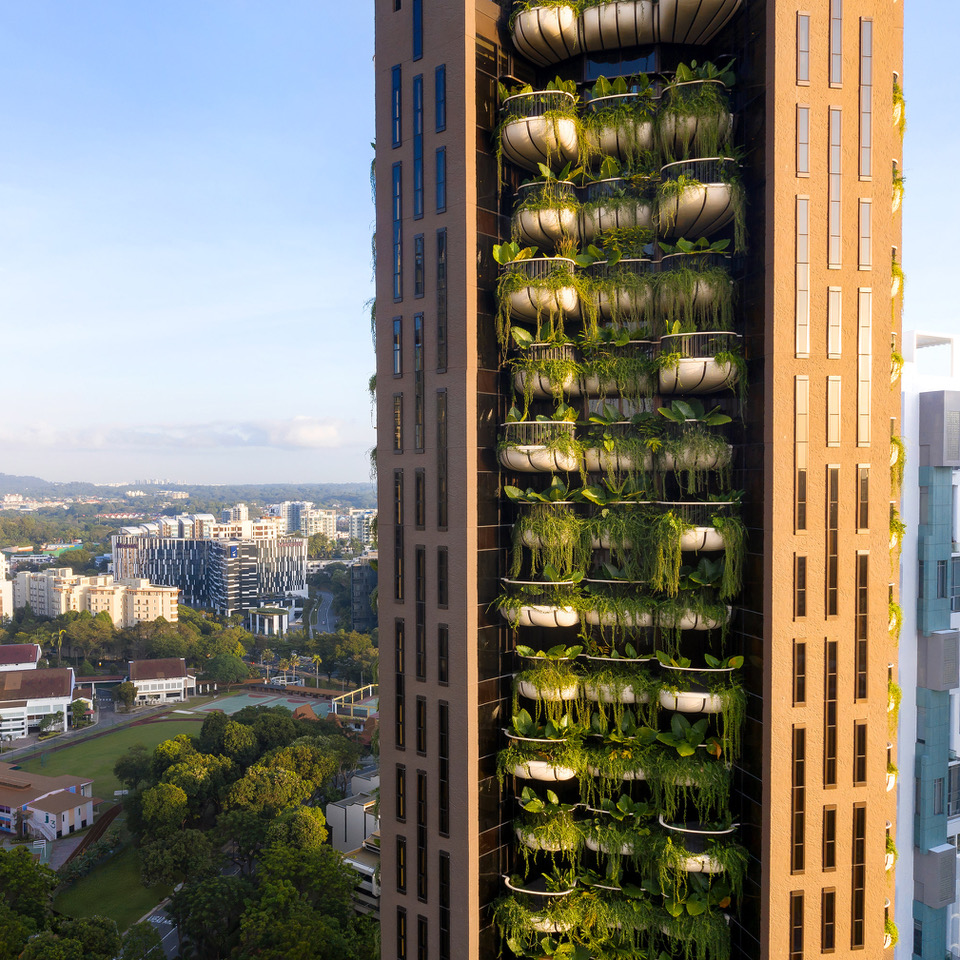
Heatherwick Studio was commissioned to design an apartment building in the historic Newton district of Singapore. Inspired by the vision of a ‘city in a garden’ imagined by Lee Kuan Yew fifty years ago, and by the lush tropical setting of the area, the studio’s design is a radical departure from the glass and steel tower typology. The studio set out to craft homes within a garden that also harnessed all the benefits of apartment living; a place where residents would feel connected to the city’s tree-lined streets whilst enjoying views, light and privacy.
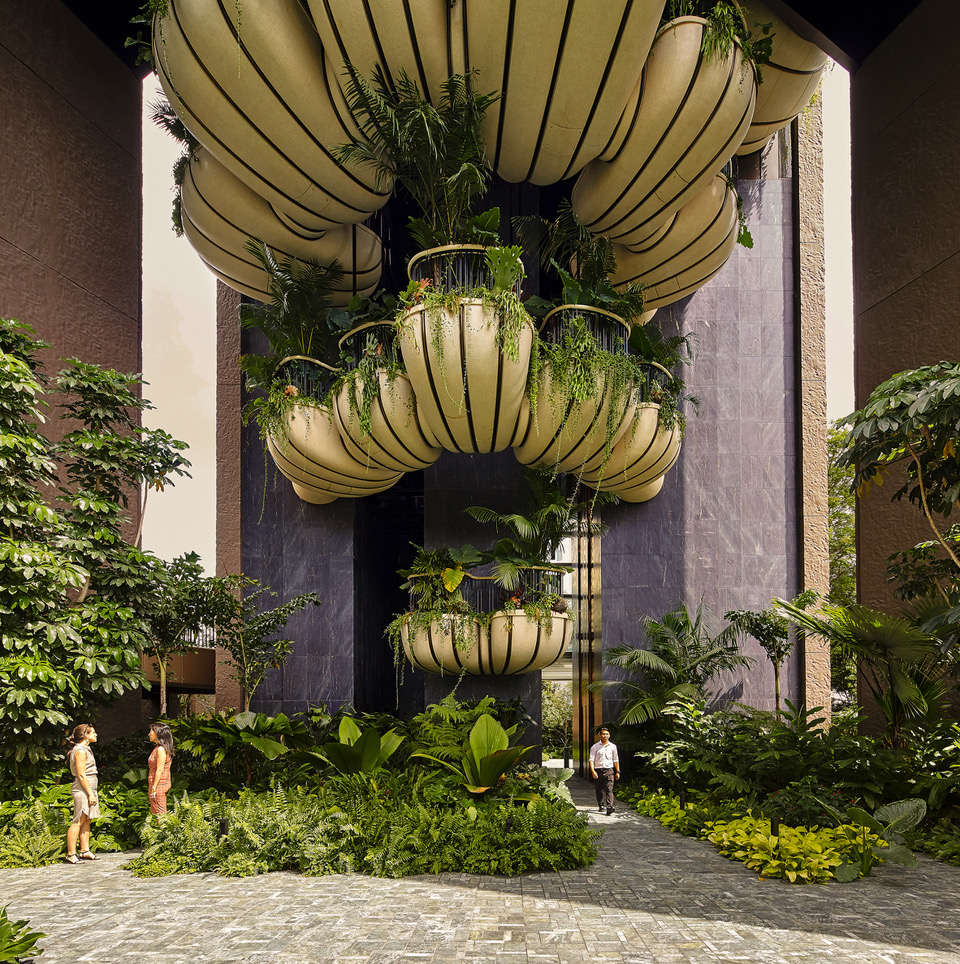
By pulling apart the square block of a conventional residential tower and moving the services to the perimeter, each apartment has a large central living space, surrounded by smaller individual rooms and wide shell-like balconies. The apartments are lifted 27 metres above an intensely planted ground-level tropical garden. The greenery from the garden is threaded upwards and around the building through a series of planted chandeliers which grow as they rise up the building’s dramatic 18 metre high lobby, to become generous private planted outdoor spaces.
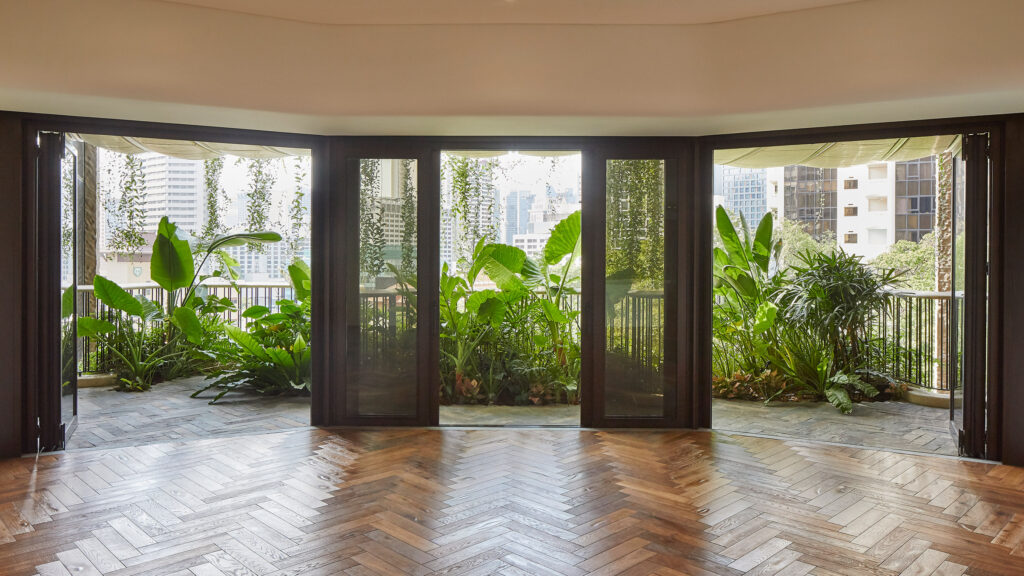
The balconies are alternated to create double-height outside spaces filled with planting from more than twenty species of flora. As well as surrounding each apartment with tranquil and calming greenery and natural shading from the Singaporean sun, the plants will grow to cascade down the building, softening its appearance.
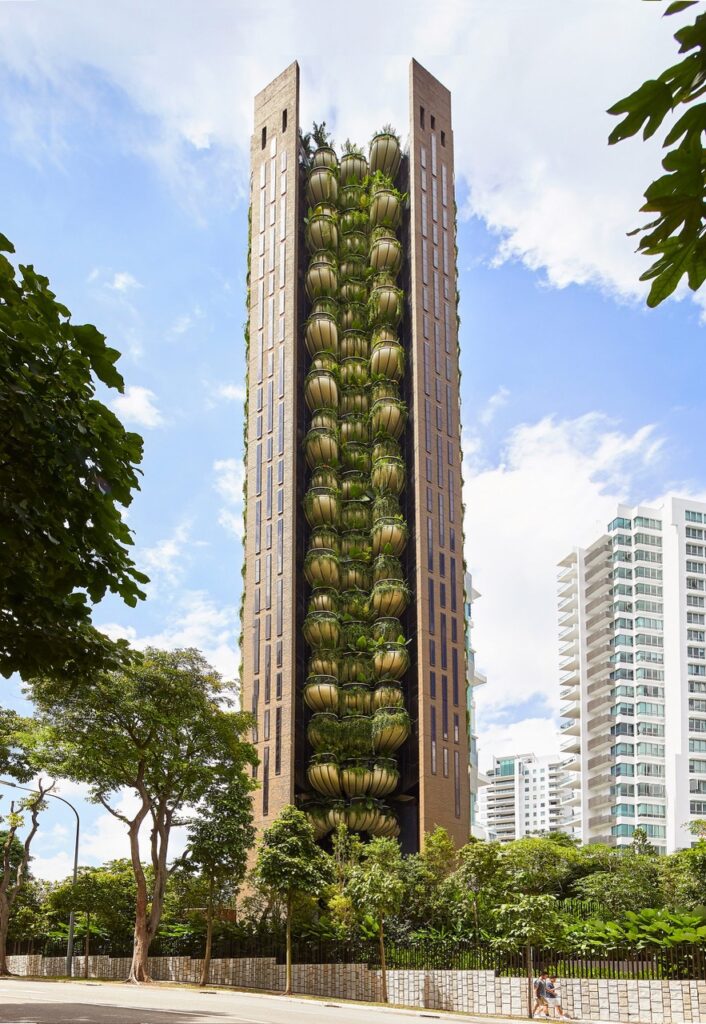
The building represents a unique way of living in the city, with its combination of evocative natural materials, textures and crafted details and its celebration of the area’s natural landscape. Over time, the building is designed to mature, as the lush planting grows, like a sapling that has taken root beneath the streets, pulling the landscape of Singapore up into the sky.
ZHA announces the design of 2 Murray Road Hong Kong, China
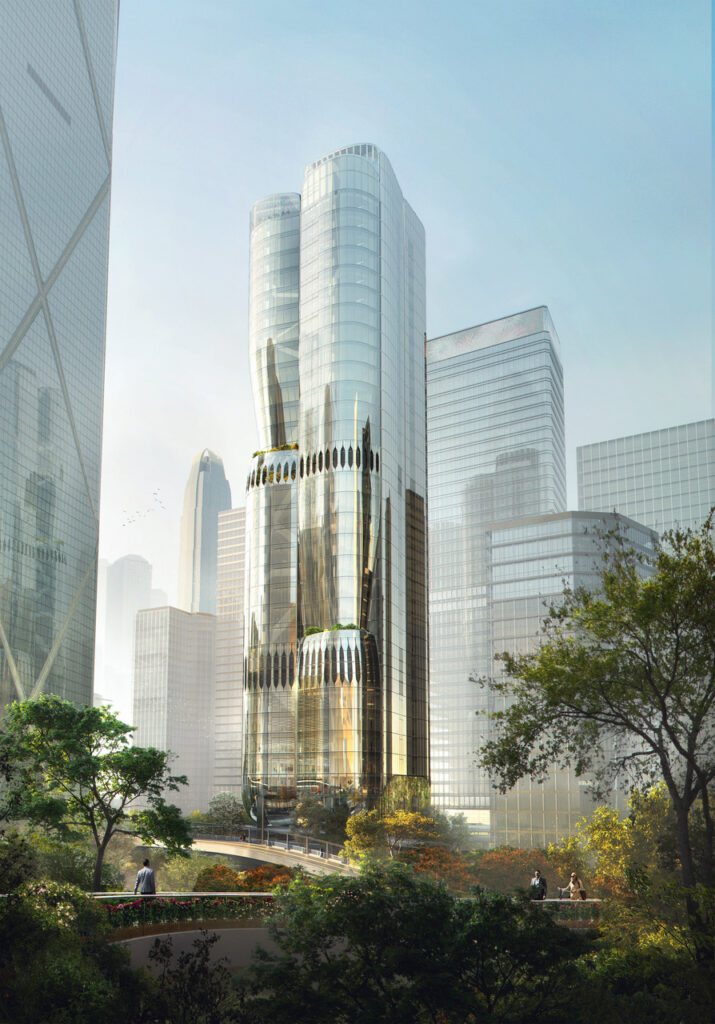
Located in the heart of Hong Kong’s central business district, the 36-storey Murray Road project for Henderson Land replaces a multi-storey car park to create an urban oasis adjacent to Chater Garden within a short walking distance to both Central and Admiralty MTR metro stations.
With its base elevated above the ground to shelter courtyards and gardens cultivated with trees and plants in the centre of one of the world’s busiest cities, the design creates new civic plazas that are enveloped by nature.
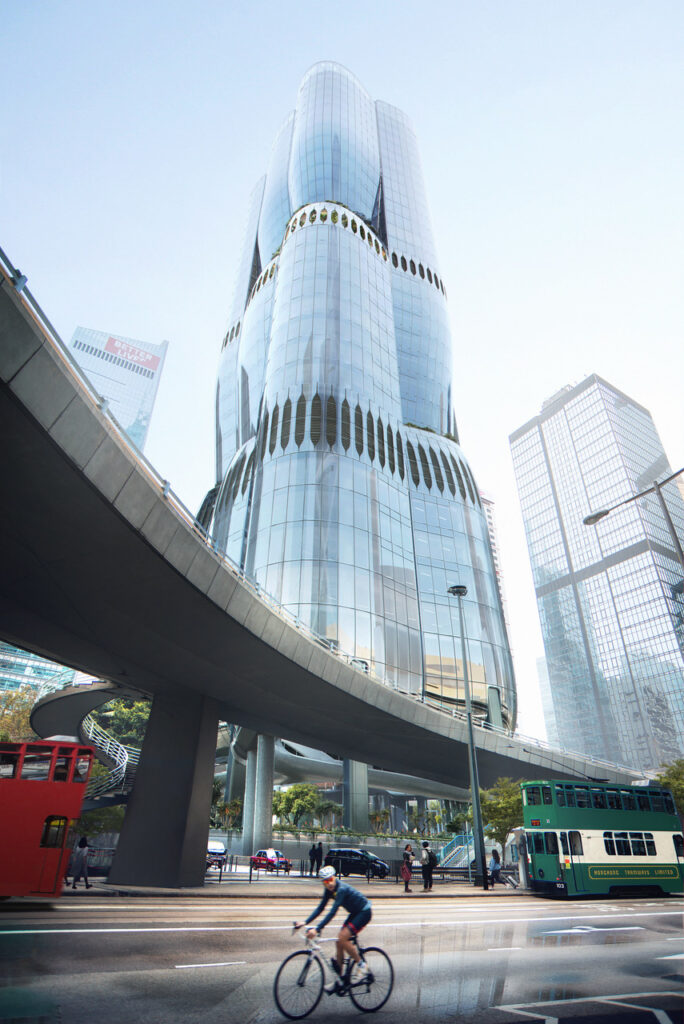
Echoing the organic forms of the natural world; the redevelopment connects with the adjacent public gardens and parks. These tranquil outdoor areas flow into the generous communal spaces of the interior; the craftsmanship and precision of the curved glass façade enhancing this seamless connectivity between the building’s interiors and the surrounding gardens and city beyond.
The design reinterprets the structural forms and layering of a Bauhinia bud about to blossom. Known as the Hong Kong orchid tree, the Bauhinia x blakeana was first propagated in the city’s botanic gardens above the Murray Road site and its flowering bud features on Hong Kong’s
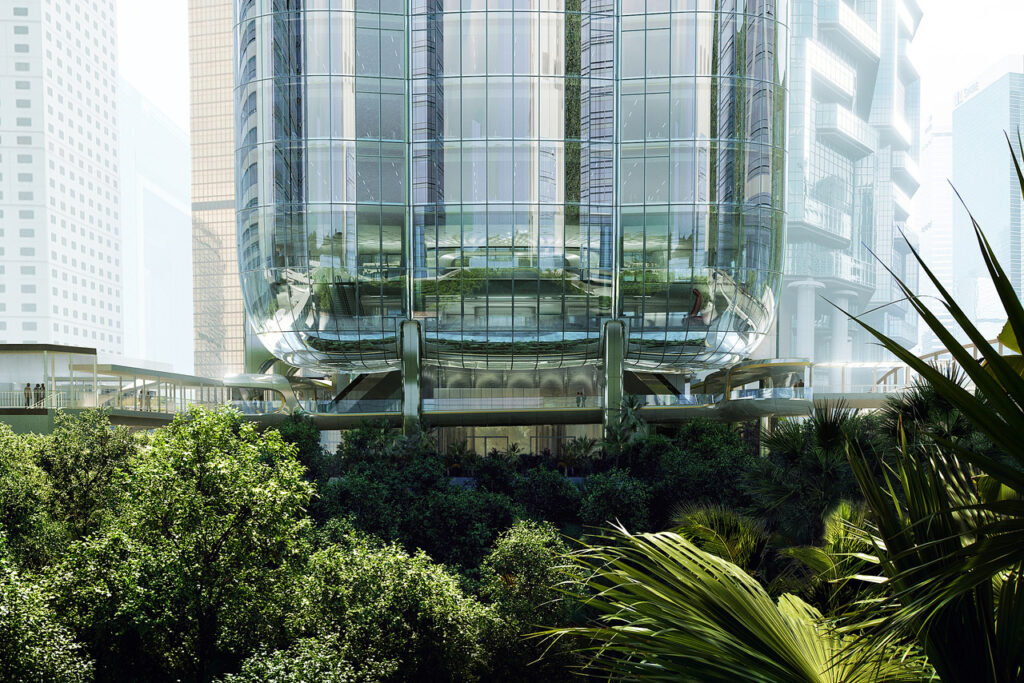
Working with the Henderson Land and Arup’s Building Sustainability Team, the design has achieved LEED Platinum and WELL Platinum pre-certification together with the highest 3-Star rating of China’s Green Building Rating Program. The design, procurement and construction targets full certification at occupancy.
The building’s smart management system creates a contactless pathway for all occupants from the street to their workstation that eliminates direct contact with communal surfaces and includes AI-assisted lift controls. Using a mobile phone, contactless smart card or biometric recognition, occupants can enter the building and pass security, call lifts to their office floor and access other zones such as lounge areas and washrooms.
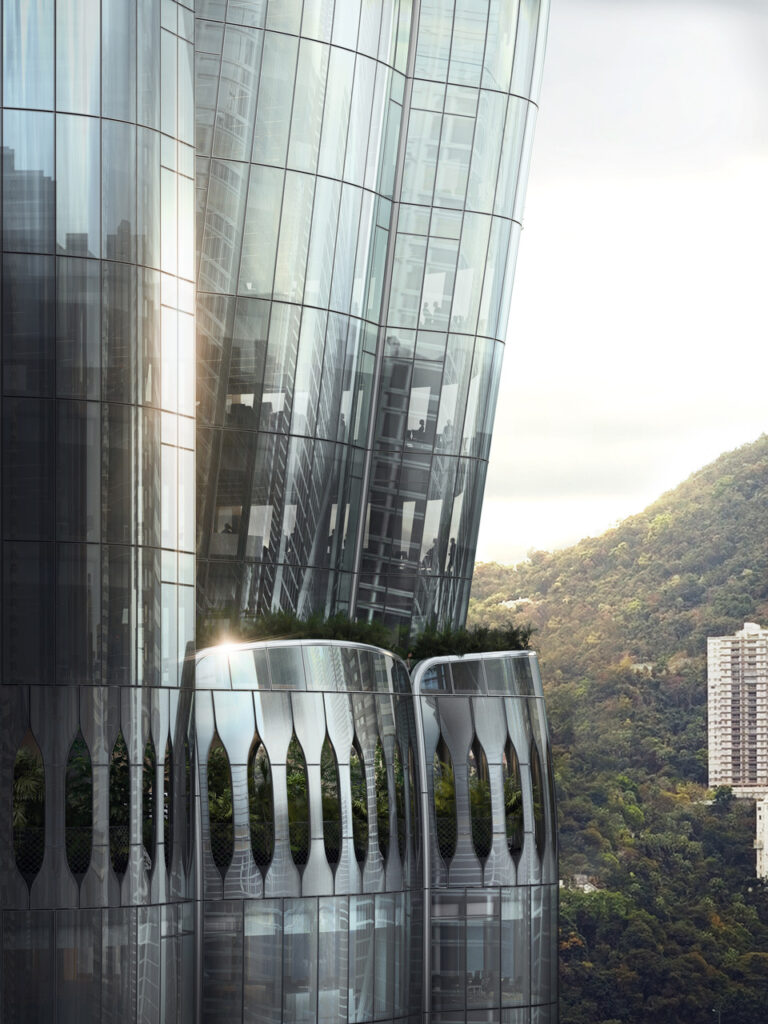
Located on the refuge floor, the Sky Garden is an outdoor recreational space with running track and an aquaponics planting network that acts as an effective biological air-purifying filter by consuming contaminants. Designed to withstand the region’s powerful summer typhoons, the façade is comprised of 4-ply, double-laminated, double-curved insulated glass units – the first of their kind in Hong Kong – to effectively insulate the building and reduce its cooling load as well as build resilience.
Hybrid ventilation is controlled by the building’s automated management system and enables all office levels to be naturally ventilated. This natural ventilation can be supplemented when required with mechanical dehumidification and filtration to further enhance the indoor environment and air quality.
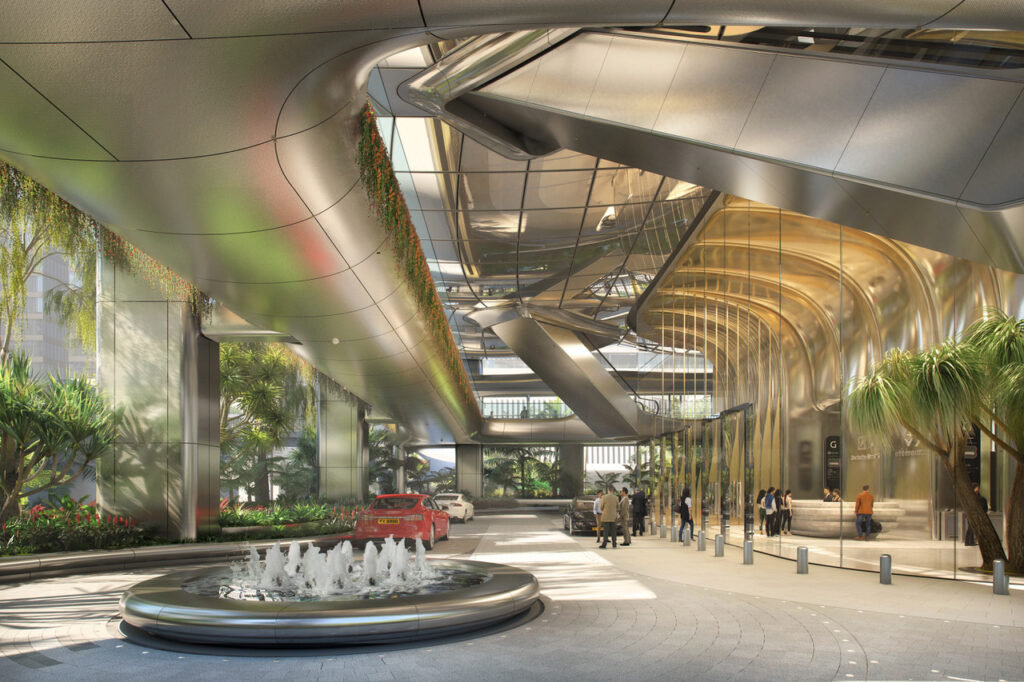
The building’s air quality monitoring system will detect the degree of occupancy in any interior and automatically adjust indoor air temperature, humidity and fresh air volume to meet demand. These smart systems learn to accurately predict daily occupancy trends to optimise energy demand, ensuring increased efficiencies with lower energy consumption.
A top-down construction method is employed to accelerate the redevelopment programme on-site by implementing deep basement and above-ground construction at the same time.
With construction works beginning last year and its procurement targeting embodied carbon reductions as well as the use of recycled materials, 2 Murray Road looks to the future with the integration of advanced design, construction and operational technologies.







